Jo Kimmins Research Process Journal
“Water is H2O, hydrogen two parts, oxygen one, but there is also a third that makes water, and nobody knows what it is.”
D.H. Lawrence
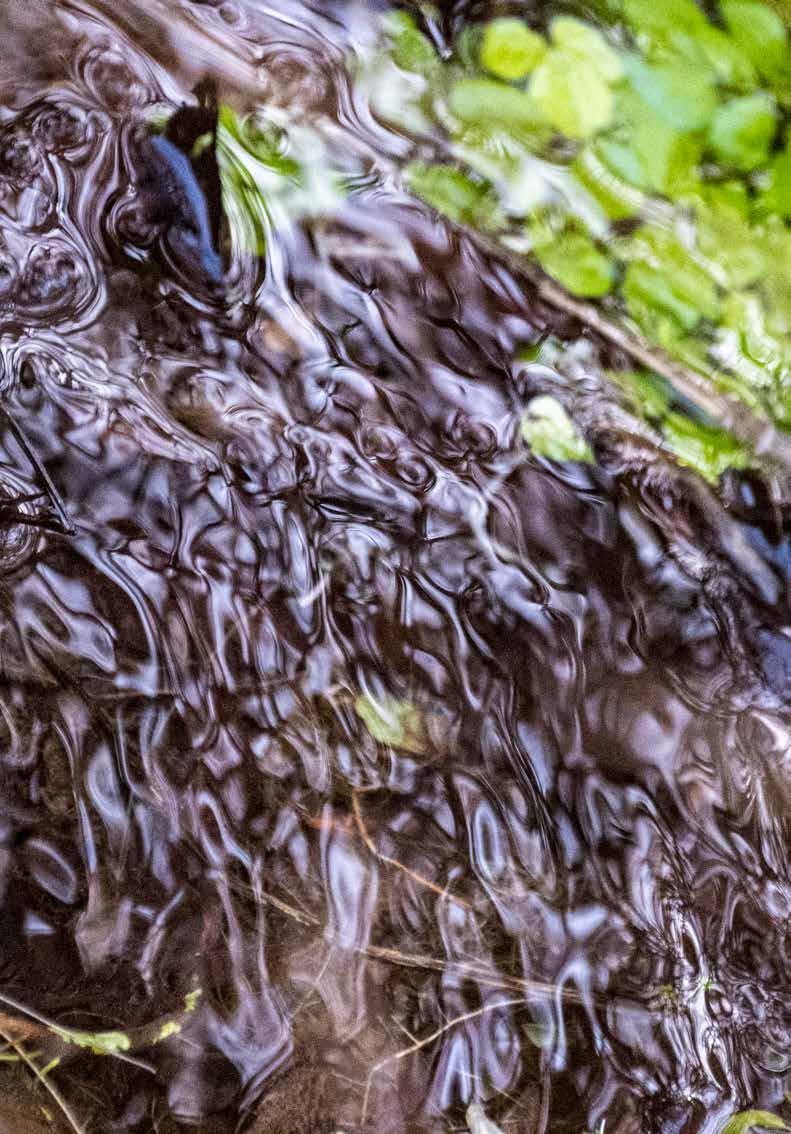
Introduction
This book is a record of my research seeking the ineffable qualities of water using a selection of Ireland’s holy wells as my water sources. This investigation into the soul of water has seeped deep into my subconscious. I can no longer sit and look at a body of water without intense wonderment and awe.
Viktor Schauberger, Alick Bartholomew and Professor Kroplin, were all experts in the study of water. They discovered that water is alive, has a memory and is receptive to human emotions. I try to capture these complexities through abstract and microscopic photography. My journey from documentary photography to fine art photography has been a long one. While my methodologies still remain linked to documentary photography, by full immersion into my subject matter, it has in turn become a route into the abstraction of fine art photography, which is the continued path of the growth and development of my art practice.
In this publication I use my photographic documentary background to record the project development and experiences. The images are accompanied with some stories of my exploits along the way, myths and tales from various wells, coalesced with quotes from ethnographic interviews of people I encountered at various wells. These interviewees give an insight into why people still visit the holy wells. The holy wells have been part of our collective history since prehistory when man worshiped the miracle of the life force, clean water, as it came gurgling out of the depths of the earth. Using history as a way of looking forward. By creating a new way of looking at water and reminding people of this ancient practice of the veneration of water may inspire peope to show water a new respect. Without water there is no life, it is a substance that needs to be minded. Today we take water totally for granted. We turn on the tap and expect water to flow out and are annoyed if it doesn’t. Instead we should be full of wonder at this miracle of modern day life. Water has been the unswerving constant at every step of our evolution and history, it holds the secret of life. Take for example the tardigrades or water
bears. Less than one millimetre long they live in a damp micro world of water amongst moss and lichens. During dry conditions they are able to survive by adapting and drying out from nearly 100% to 1% water. They convert into a micro dot of dust and can survive in this condition for thousands of years and all it takes is one drop of water to wondrously bring them back to life.
Like a sketch book, this journal, collates my journey which in turn is the backbone of my new body of work which can be seen in the second publication of my art work. A catalogue of the visual outcomes that show the seeds of my art practice and where it is going. This is not merely a journey of distance and locations but a journey into time, mythology and memories surrounding our innate connection to water and centuries of hydrolatry (the act of worshiping water). By studying and penetrating the transient world of water, light, reflection and refraction, to unlock and reveal these complexities, I am aiming to transform the everyday into the wonderful and extraordinary, through images that draw the viewer in to a new way of viewing water.
I was awarded a month-long residency at Inagh Interface in Connemara by the Arts Council of Ireland that enabled part of my research to concentrate on holy wells on the west coast. Connemara is rough, rocky and boggy ground no good for farming so over the centuries the archaeological landscape remained relatively untouched. Whereas land in the east, such as Wexford, where I live, is good agricultural land so very few ancient monuments and holy wells have been left intact. Consequently, the majority of the wells I have used are from Connemara.
An exciting development within my practice has been the documentation of microscopic photographs of the water sources and effects human emotions can have on the water. It has become a major part of my research and art practice. This has been an extraordinary journey and I would like to thank all the amazing people I have met along the way and who have helped me in my research; artists, anthropologists, scientists, cold water swimmers and holy well afficionados of all sorts.
Interface Inagh Residency
I was awarded a five week fully funded residency programme, sponsored by The Arts Council of Ireland, at Inagh Interface in Connemara. A place where art meets science, with laboratories working on water experiments alongside the artist studios. This was a fantastic opportunity as Connemara has numerous holy wells and while I certainly could not visit them all it gave me the opportunity to visit 14 holy wells, plus three I never found. Interface Inagh is nestled in the Inagh Valley surrounded by mountains, forests, lakes and rivers, an inspiration in itself for any artist. The only draw back could be the weather, when the sun shines in Connemara, the light and the scenery are all inspiring but when the weather is bad it’s not fit for the sheep that live on the mountains, let alone the humans. I travelled constantly throughout the area, out in the field, searching for holy wells. Luckily, for the most part, the weather held
and at each well I was able to spend time working on my project. Each holy well has its own character and atmosphere that I attempted to capture using both my photographic and recording equipment. I met people at some of the wells and was able to conduct ethnographic interviews with them. This proved invaluable in the analysis and insight into modern day hydrolatry at the wells. I was aided in my research by the local anthropologist Michael Gibbons and, one of the scientists working at Inagh, Micheál O’Donnelly. Michael Gibbons’ knowledge of local history was educational, and he generously gave me his time and took me to various wells. Micheál O’Donnelly kindly gave up a Saturday morning to show me three local wells near where he lived. All of which I would not have found without their help. Without this residency my research and art work would not have been as rich and rewarding.
 Interface Inagh Studio
Interface Inagh Studio



Working with Water
My work has always brought me into close contact with nature. The subject of my investigation within this project has been the water at the holy wells of Ireland. The focus of this project aims to discover and capture the ineffable qualities of water using, abstraction within a conceptual approach to my lens-based fine art practice. I use a systematic approach, using the foundations of my earlier method of documentary photography, to discover these new directions towards fine art and abstraction. This change of direction, came about in 2017 when, either fate or serendipity led me to a decomposing beached sperm whale. I spent the following four months, documenting the decomposition of her carcass. During this time, I became impervious to the corporeal reality, while, discovering a new way of seeing. The whale came into my life and gave me an endlessly changing canvas to photograph. My camera gave me the power to solicit from her decaying cadaver underlying forms of a more magnificent transformation. The decomposition of the whale was resurrected into a language of visual poetry.
At each holy well I systematically photograph above and below the water and elicited sound recordings of the ecol-
ogy and infra sounds below the water. At the majority of the holy wells I had to photograph blind under the water. The water was too shallow. I could not immerse myself into it and see what the camera sees. The camera is able to capture what the eye cannot always see and through this manipulation of time I am able to take images that would otherwise remain unseen. It is in this hidden underwater world that I sometimes find the sublime. Where water, light and refraction are captured by my camera creating images of strange worlds and waterscapes. Inexplicably, some of the uglier, fouler waters revealed more light and colour than the clear fresh ones. Two wells, in particular, gave me unexpected results. The first is Tobar Mhuire in south Connemara. The well is situated in a beautiful spot overlooking the sea but heavily fortified with statues of our lady and other religious regalia. The well was a round indent in the rocks and had about four inches of putrid water and rotting leaves at the bottom. I was not put off and, one after the other, submerged both my underwater camera and my gopro 360 into the stinking water. The results were awe-inspiring underwater visions. A sensation of total immersion in the depths of a strange and foreign sea. The second well which provided

me with remarkable results came from the unnamed well in Clifden Graveyard. To get to the well you walked down the hill, past all the graves, and into the woods. The woods were dark and sodden and the well was lost in amongst the undergrowth. It was already dusk with very little light in the woods. It had a sinister and spooky atmosphere. The water from the well ran through the murky well face and off into a stream. I felt as if this water had run through the corpses of the graveyard to get to the well. Even so I took the time to sink my cameras into the mud and the grime. In doing so, I captured one extraordinary image of light and colour that came from somewhere, but I don’t know where. It was as if there were supernatural forces at work in the water. For me, this photograph is an example of the hidden ineffable qualities within the water. I collected water samples at each site and the water samples were microscopically photographed using the scientific Droplet Evaporation Method (DEM), a microscopic study of the water sources. This method enabled me to extend my individual visual perspective and discover any significant revelations revealed within the water samples taken at the selected sites. All the DEM images were abstracted aesthetics of water.
At each holy well I investigated water’s soundscapes by using specialist hydrophone microphones in order to capture the infrasound’s within the water sources. Listening to the hidden sounds within the water adds a new dimension to my visual work. My initial experiments with soundscapes introduced me to an astonishing world of new abstract sounds. Some of which accompany my multi media experiments with video, sound and 360 degree images. Hearing enables us to sense space, exist in time and engage with the flow of energy. Listening enables us to extrapolate from content towards meaning and orient ourselves in relation to both place and space. It allows us to reflect upon the sounds, the expressions created and to consider how this will affect those who hear it. Sound is a phenomenon that affects our experience in everyday life. It helps us to define our location and direction.
I find constant inspiration in searching for the hidden qualities of water, whether staring into the dark field microscope, or delving into the underwater world with a camera. Each image from this aquatic exploration, photographic or microscopic, brings me closer to discovering the ineffable qualities of water and the sublime.

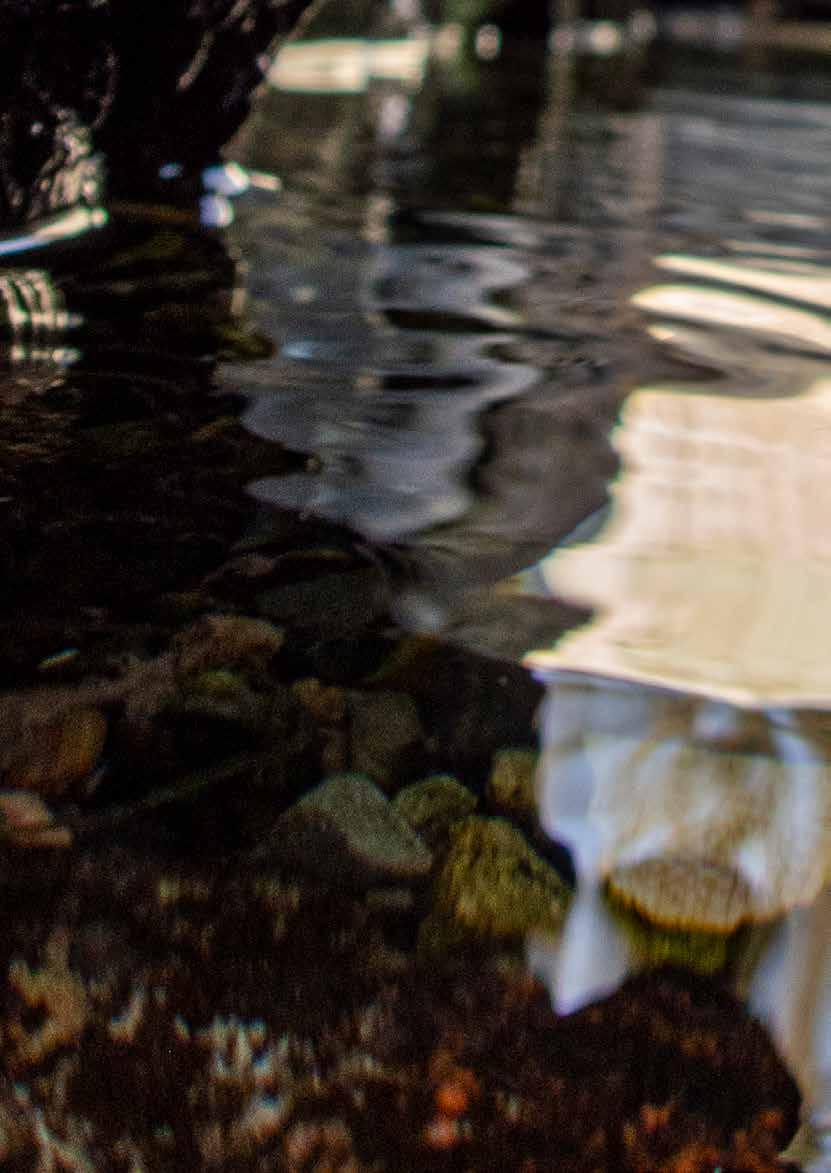


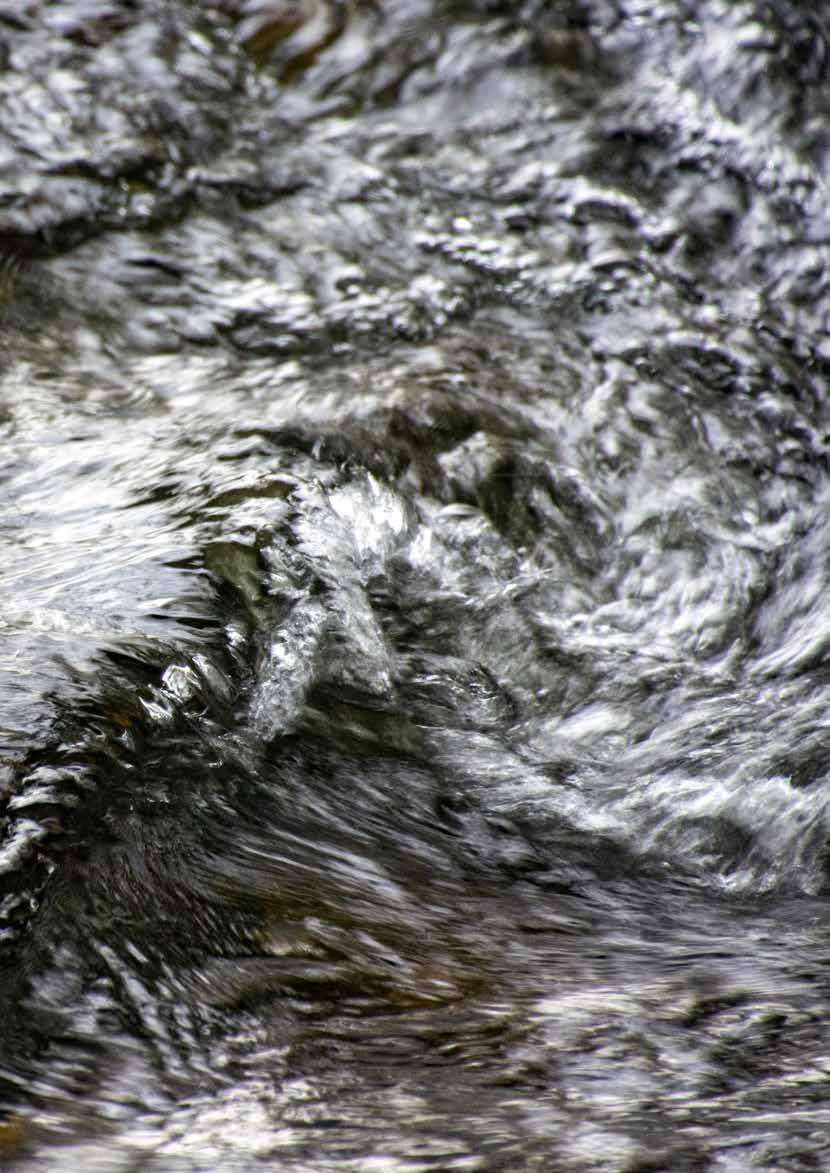


The Holy Wells.
Since time immemorial man has worshiped water. According to Graham Hancock in his series ‘Ancient Apocalypse’ (Hancock, 2001) claims that the majority of ancient sites of worship, for example, Newgrange in Ireland, Great pyramid of Giza, Egypt, Gunung Padang in Indonesia, and, the Great Pyramid of Cholula in Mexico have natural sacred springs at their cores. In Ireland, according to the Ordinance Survey Ireland map there are over three thousand holy wells across the country. Initially these would have been pagan and celtic sites. But have since been absorbed into the Catholic church. Consequently, they are an important part of our landscape and history. Although these sites are now predominantly Christian many of the modern-day rituals and customs remain pagan at heart. For example, leaving votives, circumambulation and rag trees.
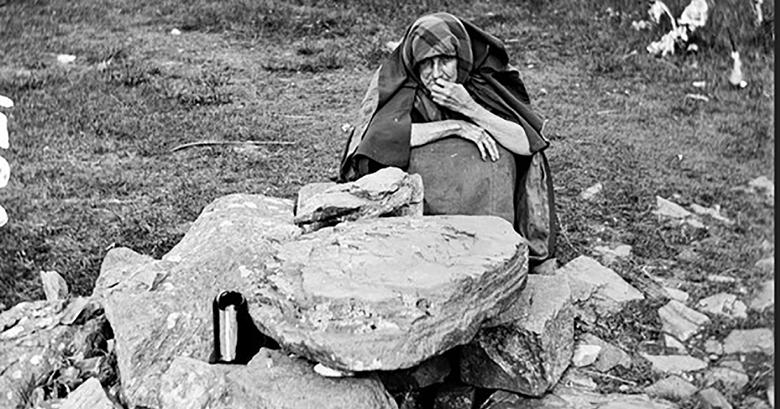
With centuries of adoration and devotion these water sources were the obvious choice to initiate my research. They are often in beautiful remote places which brings a certain visual tranquillity in itself. Seventy five percent of people I interviewed found them places of peace and tranquillity rather than holy sanctuaries. One interviewee who firmly stated that she was not religious but often almost went into a torpor at some holy wells. Some wells I found by chance; others I went in searched of, some I only found due to the generosity of people taking the time to direct me to them, and, some I never found. What I did find was a rich tradition of hydrolatry, sometimes for Christian reasons but more often than not they
are there for the peace and meditative atmosphere offered by these places.
Actually finding a holy well is an important part of the journey, as you are going into the land to discover the different landscapes, with their individual hidden treasures. One interviewee said “When a well it’s very overgrown, very disguised, you have to rummage around to find it. And in that rummaging, I find that there is a kind of a mind shift. You’re physically clearing bracken. You’re physically clearing sometimes briars and all those lovely earthy and green smells come at you. And then you find the well and you scoop out the water and it’s so clean and so clear and very cold.” - Bridgit
Due to the opportunities afforded me by the residency at Inagh Interface, I researched twice as many holy wells in Connemara as I did in Wexford, the place of my residence. Aided by the fact that Connemara has many more holy wells than Wexford, where many have been destroyed, over the years, through intensive farming. Many wells are beside roads or well signposted up country lanes. Whereas others may take a day or so to get to them. St Patrick’s Well on Mau Mean Mountain, for example, is a very long hike up the mountain to St Patrick’s well, chapel and bed. St Patrick’s bed is a very uncomfortable looking rock where he is supposed to have slept after arriving at the Mau Mean Pass from County Mayo. After sleeping on his rock bed, he looked down across the Connemara landscape that spread out in front of him but decided against descending down the mountain and into Connemara. Instead, he retraced his steps back into Mayo.

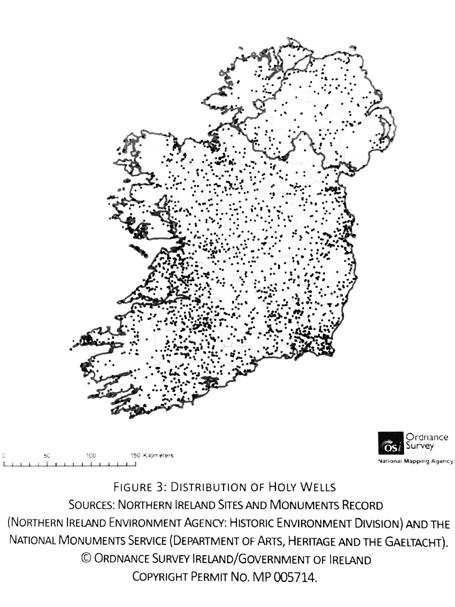 Map of Holy Wells I visited during research period. Each black dot is a holy well visited
(Ray. 2014)
Map of Holy Wells I visited during research period. Each black dot is a holy well visited
(Ray. 2014)


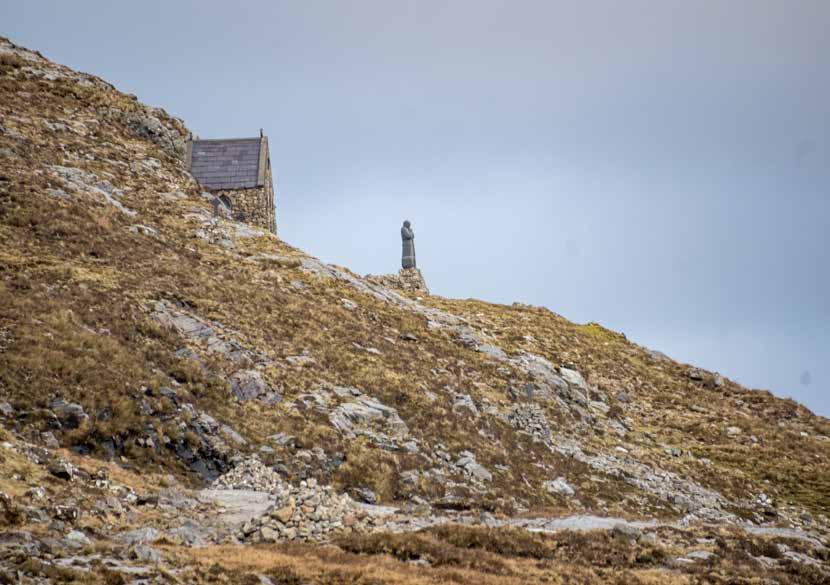

Holy
 Wells Galway
1. St Augustine’s Holy Well Galway City
2. St Enda’s, Barna, County Galway
3. St Colmcille(not found) & his boat. Lettermore Island, South Connemara.
4. Tobar Naomh Aína, Lettermore Island, South Connemara.
5. Tobar Tomás, Lettermore Island, South Connemara.
6. Tobar Ciarán, Kilkieran, South Connemara.
7. Tobar Mhuire, South Connemara.
8. St. Columcille Headland, Letterard, S. Connemara.
9. St. Columcille Harbour, Letterard, S. Connemara.
10. St. Columcille School, Letterard, S. Connemara.
11. Seven Sisters Holy Well, Ballyconneely, Connemara .
12. Unnamed Holy Well, Clifden Cemetery, Connemara.
13. St Ceannannach’s Holy Well, Moyard, Connemara.
14. The Seagull’s Ceannannach Head.
15. Seven Daughters Holy Well, Cashleen, Connemara.
16. St Patrick’s Holy Well, Mau Mean Mountain, Connemara.
Wells Galway
1. St Augustine’s Holy Well Galway City
2. St Enda’s, Barna, County Galway
3. St Colmcille(not found) & his boat. Lettermore Island, South Connemara.
4. Tobar Naomh Aína, Lettermore Island, South Connemara.
5. Tobar Tomás, Lettermore Island, South Connemara.
6. Tobar Ciarán, Kilkieran, South Connemara.
7. Tobar Mhuire, South Connemara.
8. St. Columcille Headland, Letterard, S. Connemara.
9. St. Columcille Harbour, Letterard, S. Connemara.
10. St. Columcille School, Letterard, S. Connemara.
11. Seven Sisters Holy Well, Ballyconneely, Connemara .
12. Unnamed Holy Well, Clifden Cemetery, Connemara.
13. St Ceannannach’s Holy Well, Moyard, Connemara.
14. The Seagull’s Ceannannach Head.
15. Seven Daughters Holy Well, Cashleen, Connemara.
16. St Patrick’s Holy Well, Mau Mean Mountain, Connemara.

Following the directions to holy wells found on archaeological, and holy well sites and publications varies from trouble-free to impossible. It was a grey drizzling Connemara day when I set out to find the Seven Sisters Holy Well at Doon Hill, in Ballyconneely. The directions were a little vague: “The well is located at the base of Doon Hill. Across from the golf course turn off after Ballyconneely village. It is located in a field 200 meters east of a red roofed shed.” With the help of a local postman, I found the red roofed
shed. I parked up and, although unsure which direction east was, I went in search of the well. The shed was surrounded by poached mud from cattle and thick dense bushes that were unpassable. I found a route through a holiday home garden and up over a wall. For a couple of hours I tramped through the sodden fields, up the hill and over streams. Searching in groups of rocks and behind hillocks where the well might have been hiding. The only thing I did find was a shebeen hidden in the woods.
 Searching for Severn Sisters Holy Well Ballyconneely
Searching for Severn Sisters Holy Well Ballyconneely
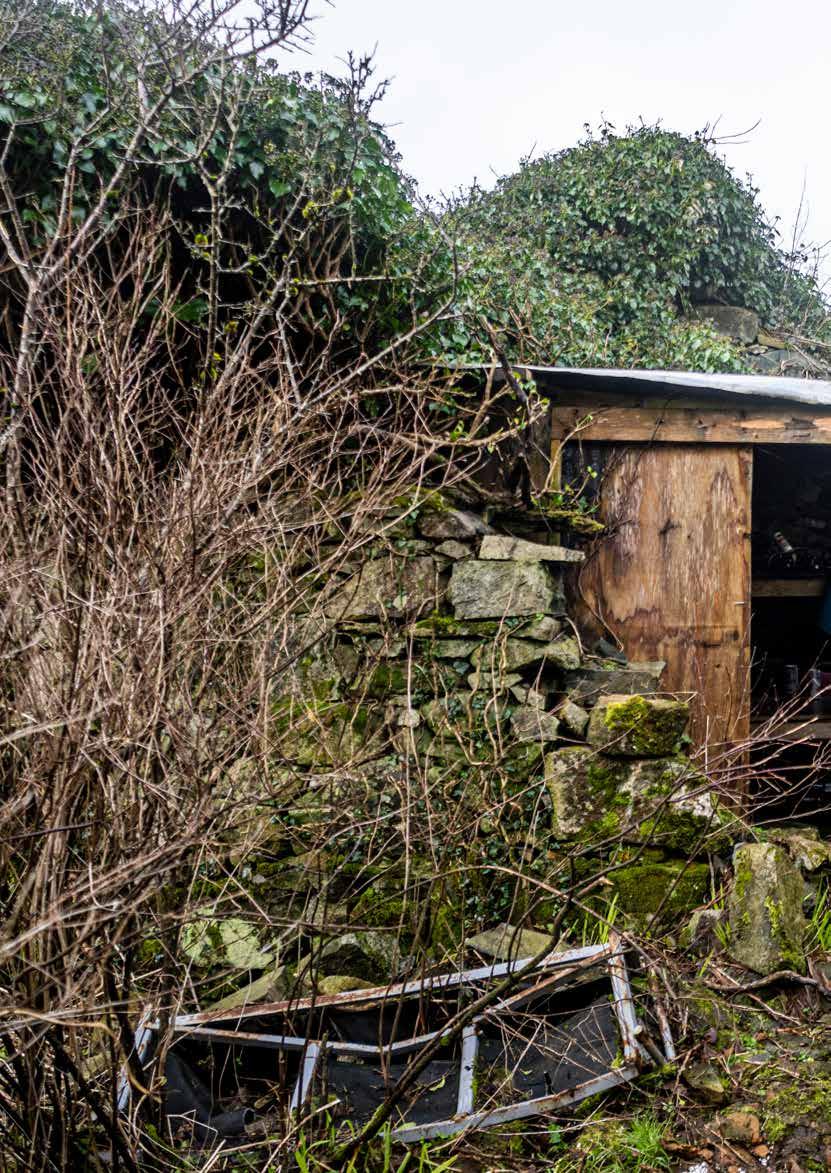


The number seven certainly caused me trouble when trying to locate wells of seven females. The Seven Daughters Holy Well in Renvyle was said to have cured the daughters of a King of Leinster, or a chief of Omey Island who then built a church to give thanks. I had lived in Renvyle 30 years ago, although I had never visited the well, it was a pleasant trip down memory lane. The sun was out and Connemara was at her most beautiful best. Time slows down in Connemara as one is lost within the landscape and the past that surrounds you. The well was said to be located 100 meters north of the church. I knew looking out to sea was west because I had often watched the sunsetting over that horizon. So, the well should have been easy enough to find but it wasn’t and I never

did. What I did find was the grave of my dear old friend and neighbour Paddy Fitz.
St Colmcille, one of Ireland’s three patron saints, has numerous holy wells named after him. With the Anthropologist Michael Gibbons I went in search of one of his coastal wells.Michael had a photograph showing where the well was meant to be on a beach on Gorumna Island. We searched and searched looking for the rocks in the photograph to no avail. We found St Colmcille’s boat – a huge stone rock in the shape of a boat upon which he was meant to have travelled from Inis Mor to the beach on – miraculous. Even though we never found that particular well, thanks to Michael I got to visit Tobar Tomás, Tobar Naomh Aína and the unnamed well in Clifden Graveyard.
 Michael Gibbons Searching for Colmcille Holy Well
Michael Gibbons Searching for Colmcille Holy Well



Micheál O’Donnell, a scientist at Inagh Interface, had told me about three other St Colmcille’s wells in Letterard, South Connemara where he lives. He showed me on the map and I headed off to try and find them. I travelled around and around Letterard and asked numerous people but no one knew where they were. So I never found them. Luckily that weekend Micheál took the time to show me where they were. At the Headland Well I discovered that I had only been a couple of yards away from the well. A beautiful, perfectly round indentation in the rocks a few meters from the roaring Atlantic Ocean. Breath-taking with absolutely no votives, crucifixes or any Christian clutter. The holy well in the harbour had some religious regalia, rosary beads and coins. And the third well in front of the National school emerging through the seaweed like the earths umbilicus, and impossible to find without fore knowledge.
Micheál told me how the well beside the National School used to be a place of annual pilgrimage for the children from the school.
“The older classes in the school, 4th and 5th class, the teacher would always bring us back on that pattern day, the 9th of June. There might have been 20 or 30 of us. And we’d all have our little pack, our pebbles, our stones and you would go around 10 times, and the large rock was an alter so we’d also go around the alter 10 times say a little prayer and drop a pebble into the well after each round” - Micheál

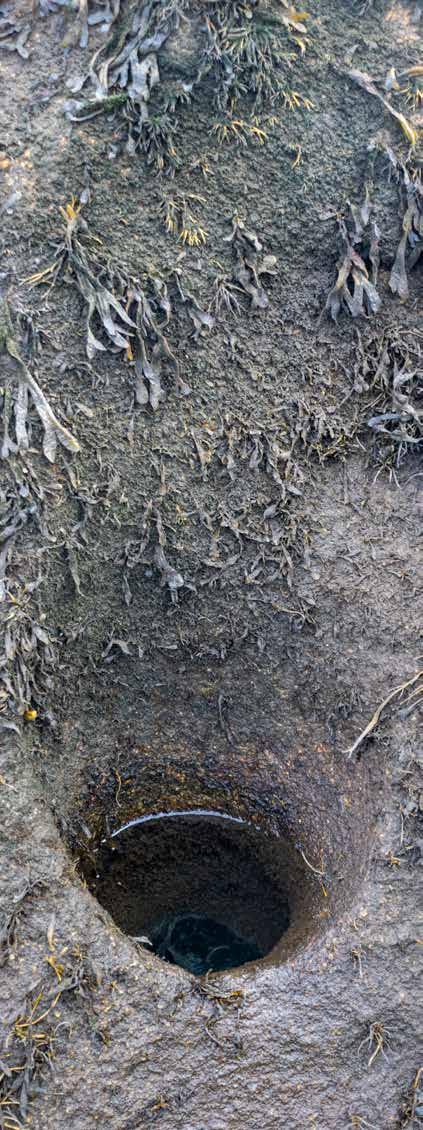
 Micheål O’Donnell at Colmcille School Well, Letterard, Connemara
Micheål O’Donnell at Colmcille School Well, Letterard, Connemara

Holy Wells Wexford
1.Kilpatrick’s Holy Well, Kilpatrick, Wexford.
2.Cranavane, Bunclody, Wexford.
3.St Enda’s Holy Well, Oilgate, Wexford.
4.St Garvin’s Holy Well, Taghmon, Wexford.
5.St Anne’s Holy Well, Tomhaggard, Wexford.
6.St James’ Holy Well, Tomhaggard, Wexford.
7.Ladies Island Holy Well, Ladies Island, Wexford.
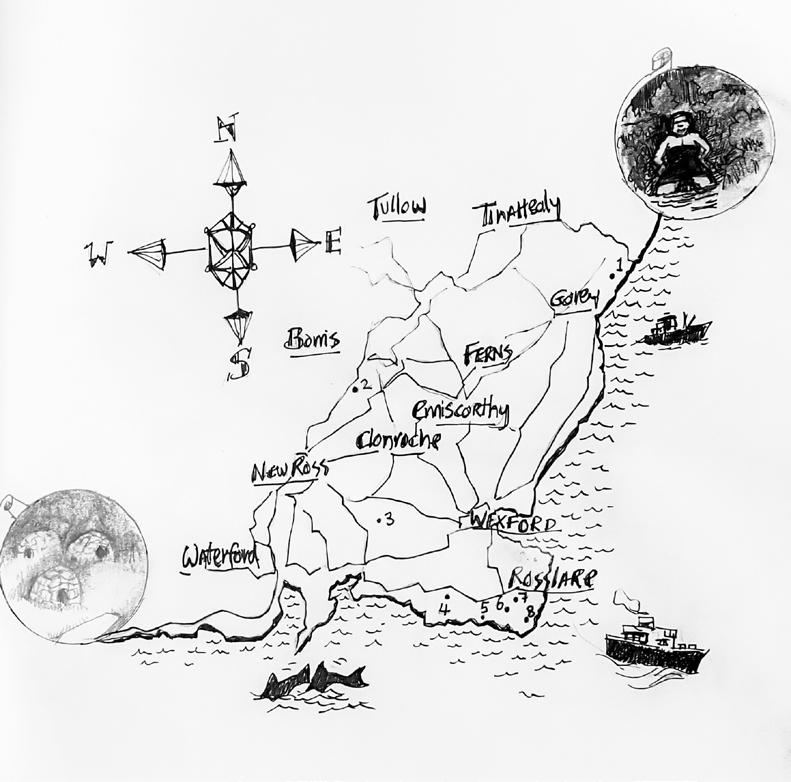
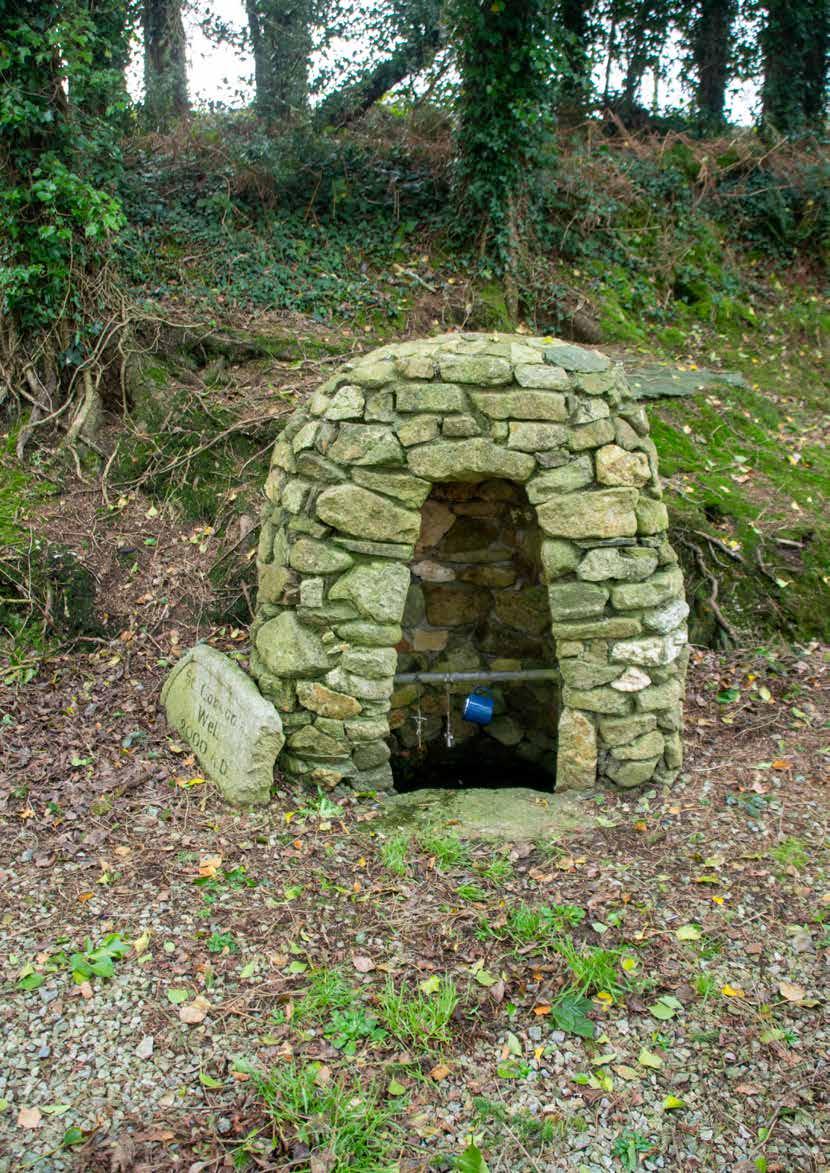


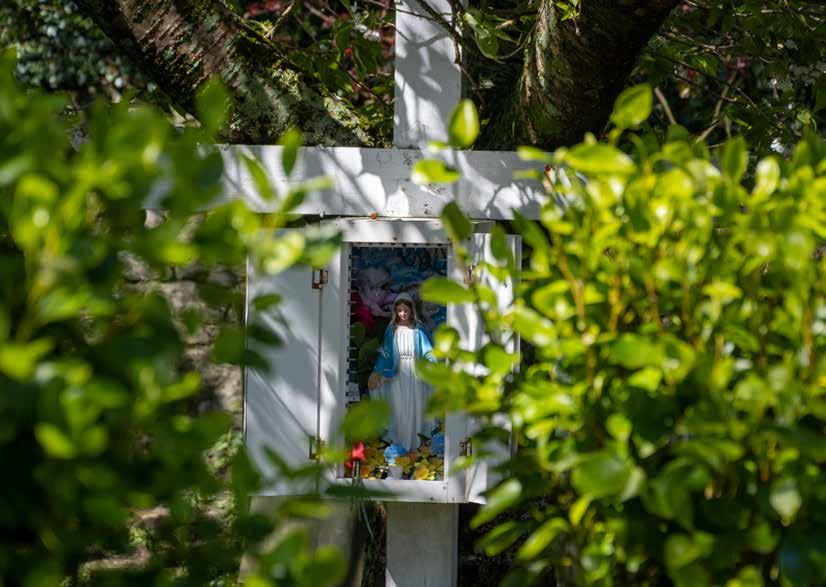






Circumambulation, encircling a sacred object as part of a religious ritual, is an ancient ritual and present in many religions including Hindu, Buddhist, Judaism, Islam and Christianity.
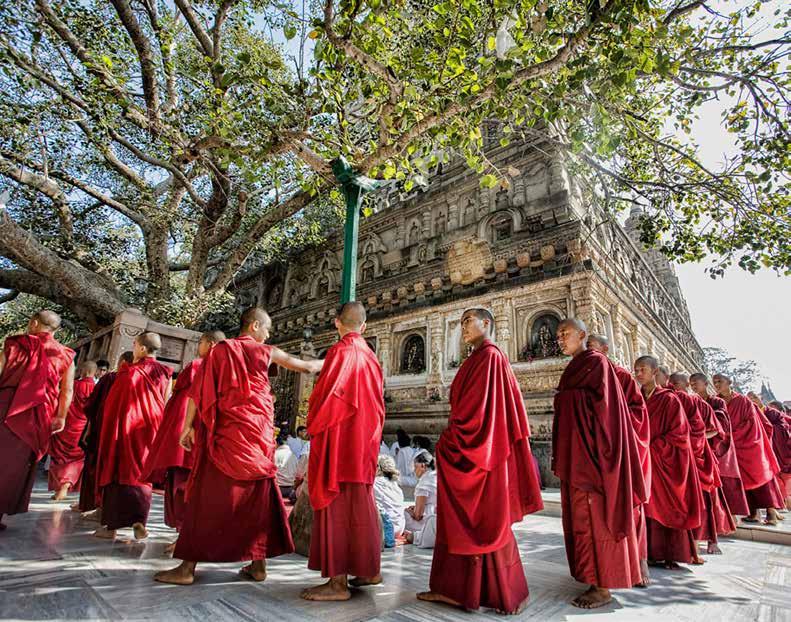
In Irish mythology, in the Táín Bó Cúailnge, before a battle chariot drivers would turn their war chariots in a circle to the right in order to guarantee a successful outcome. Also, when the warrior Cúchulainn died Liath Macha, his horse, circled the hero’s wife three times to the right to bid her farewell.
At the holy wells today, ‘paying the rounds’ (cucumambulation) involves walking sunwise or clockwise an established number of rounds, between three and twelve, while reciting the same number of prayers. The belief is that to go contrary to the accepted direction could bring a curse and misfortune.
Looking at the paths etched into the ground by pilgrims
you can feel the years of passing feet trudging for eternity, and on into the future.
While Micheál no longer partakes in the pilgrimage some of the interviewees still practice doing the rounds.
“We circled the well nine times saying a decade of the rosary.” - Henry.
“A lot of people walk three times around them. I just go and sit and look at it and just kind of dream” - Mo.
When I arrived at Tobar Naomh Aína on Lettermore Island I came across Suzanne who was walking around the well, praying, and dropping stones into the well. The well is triangular in shape and right beside the lake. The story goes that everyone washes their feet before going to the well because Saint Anne washed her feet in the lake. Suzanne explained how “You pick nine stones around the well and you go around and you say a prayer and you drop a stone into the well and you do it nine times.” -
Suzanne Young Tibetan Buddhist monks circumambulate the sacred bodhi tree. Gianni Muratore / Alamy Stock Photo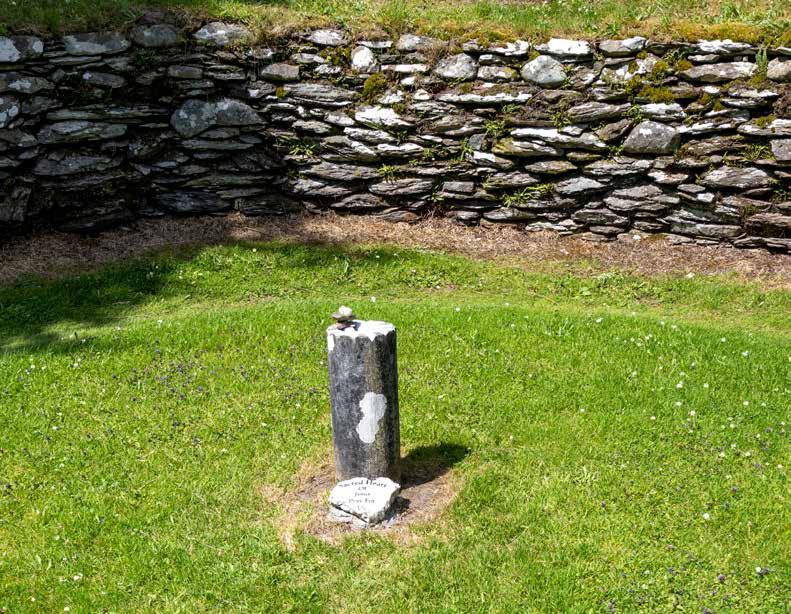
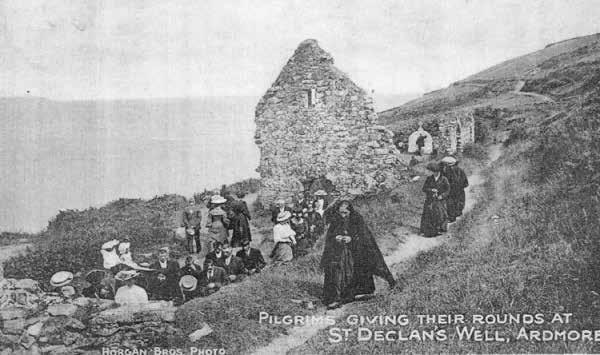 Women giving their rounds, St Declan’s Well, Waterford, 1900’s. (Ardmore Waterfrd 2022)
Women giving their rounds, St Declan’s Well, Waterford, 1900’s. (Ardmore Waterfrd 2022)




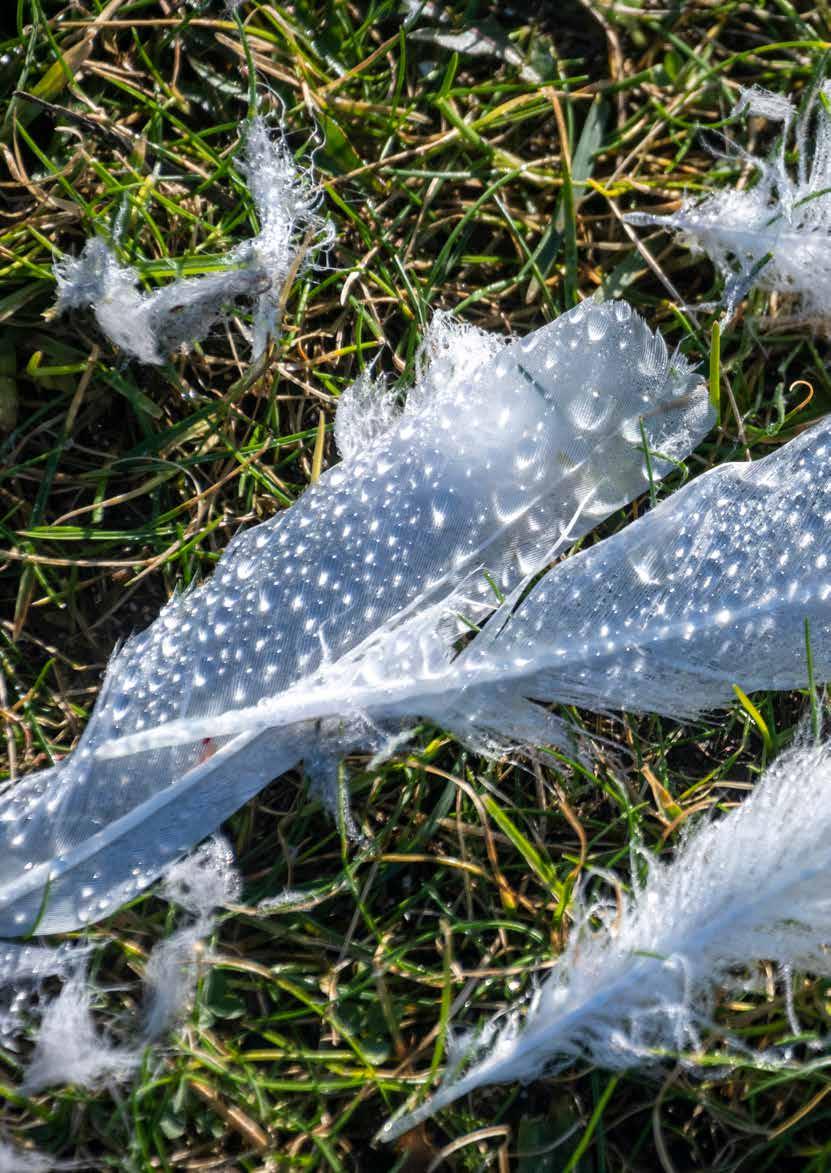

St Ceannannach’s Holy Well Ballynakill
The god’s were certainly shining on me as the sun split the Connemara rocks and, with the GPS coordinates for St Ceannannach’s well, I felt erroneously confident that I would find it with ease. But in fact, these coordinates led me to an extremely ugly modern church with no sign of a holy well anywhere. Luckily a dog walker came by who sent me off down the road, away from the GPS coordinates, on the correct route. Finally up a dead end I found the well down a small bank surround by scioch and bushes. Accompanied by a sweet singing robin I set to work. St Ceannannach was a very early Christian monk from the late 5th early 6th century. He set up a mission in the parish of Ballynakill, which was still pagan at that time. The local king was enraged by Ceannannach’s impudence and had him beheaded in the neighbouring townland of Cleggan. Apparently the stone where he was beheaded is still stained by his blood. The story goes that Ceannannach picked up his head and walked back to the well in Ballynakill. From there the story has two different endings. In both stories he washes his head in the well water and reattaches it to his body. In one version he then lays down and dies and in the other he get up carrys on living and continues with his missionary work. After leaving the well I came across my own Ceannannach, who was most certainly part of the first ending.




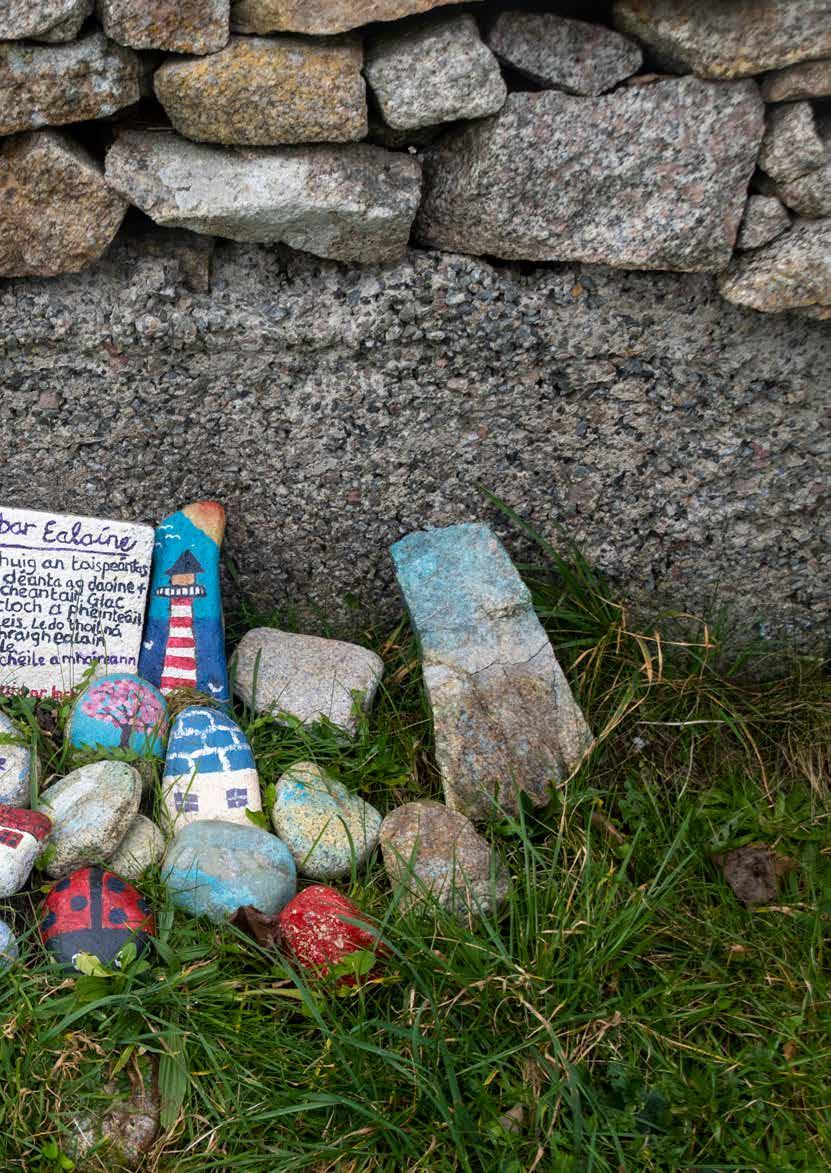
Votives
For as long as human’s have worshiped water, they have left votives for their divinities. Bradley noted that votives deposition have a long history, “in some cases extending without a break from the Neolithic period. Pre-eminent among these were deposition of valuables in watery locations - rivers springs lake and bogs” (1990 p.183) Aiden O’Sullivan affirms that Mesolithic and Neolithic deposition patterns demonstrate the spiritual importance of wetlands in those eras (2007. p.182).

Through votives, rag trees, and the water at the holy wells people believed that the water would hear them, listen to them, answer their prayers and heal them. Not all items left at the holy wells are votives – objects left to be successful with a wish, an oath or a prayer. Some deposits would be given in thanks, or seasonal gifts, for example a yearly saint’s day or non-specific offerings. Sometimes instead of an offering they use a stone to engrave a cross into the rocks. Many motives for leaving votives would be a way for the person to connect to the supernatural force at the holy well. Leaving an article of clothing or some item that had been in physical contact with them, formed a personal link between them and the site, ensur-
ing that their prayers would continue after they left.
These ancient traditions, that are pagan at heart, are still seriously performed today, as all my ethnographic interviewees left something at the holy wells.
“I write on the trees. I leave scriptures in Hebrew or Latin” - Steven.
“I left white quartz stones, because of the traditions. The burials that were uncovered on Omey, all the grave sites were surrounded by chains of quartz.” - Mo.
“I have seen people leaving things like a lighter when they want to give up cigarettes or a bottle when they want to give up alcohol.” - Henry.
“I light a candle for thanks.” - Andrias
“A shell to give healing to my daughter.” - Alannah. “Flowers, ribbons, just to show I have been, an acknowledgement.” - Amanda.
“Before entering a site I like to make a little offering, usually a jelly baby or a sweet” - Noel
Often photographs of the dead and dying stare out at you as if staring at you from beyond the grave. A grim reminder of our mortality.

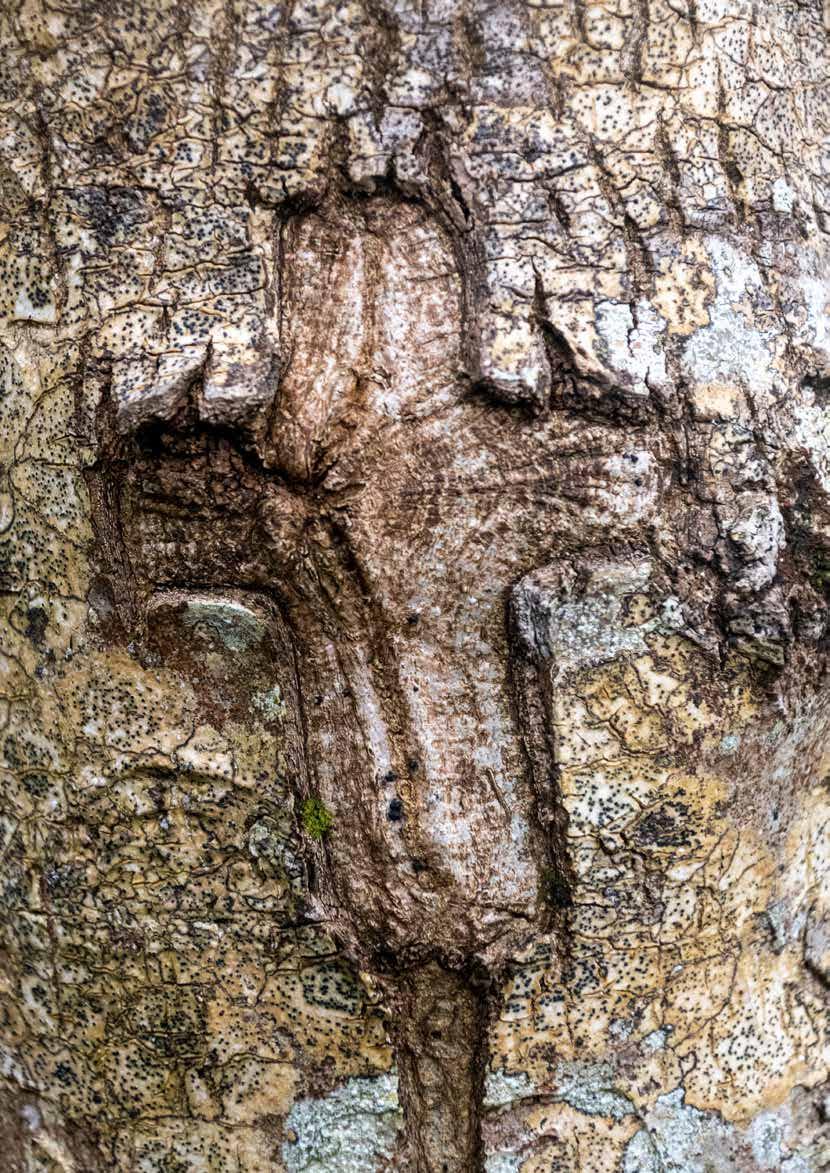

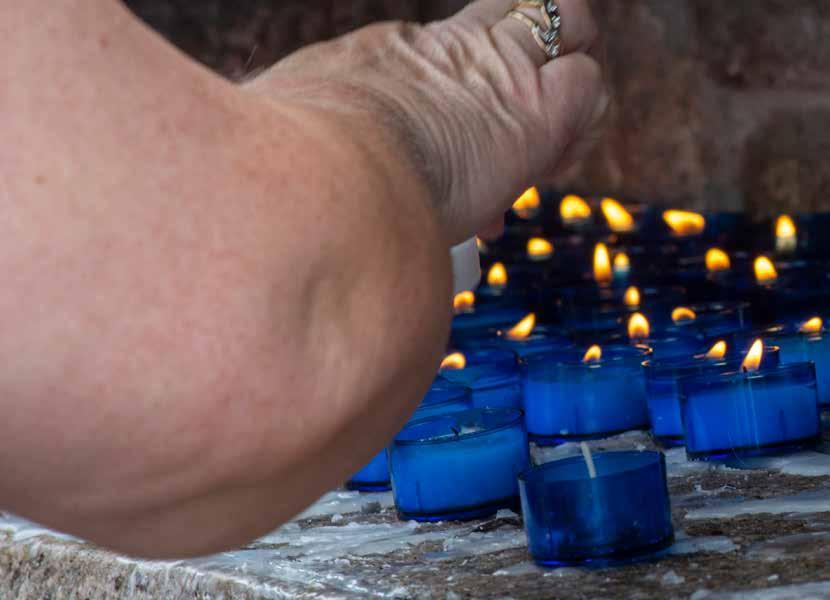


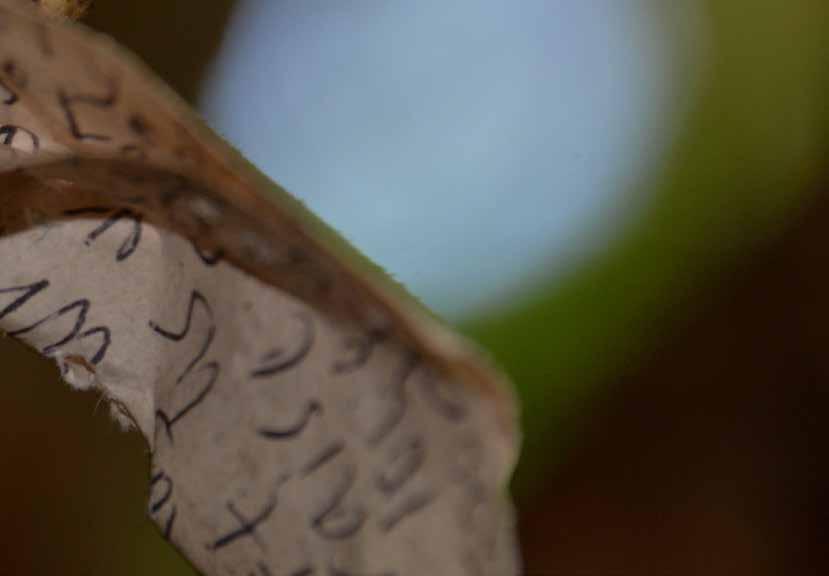

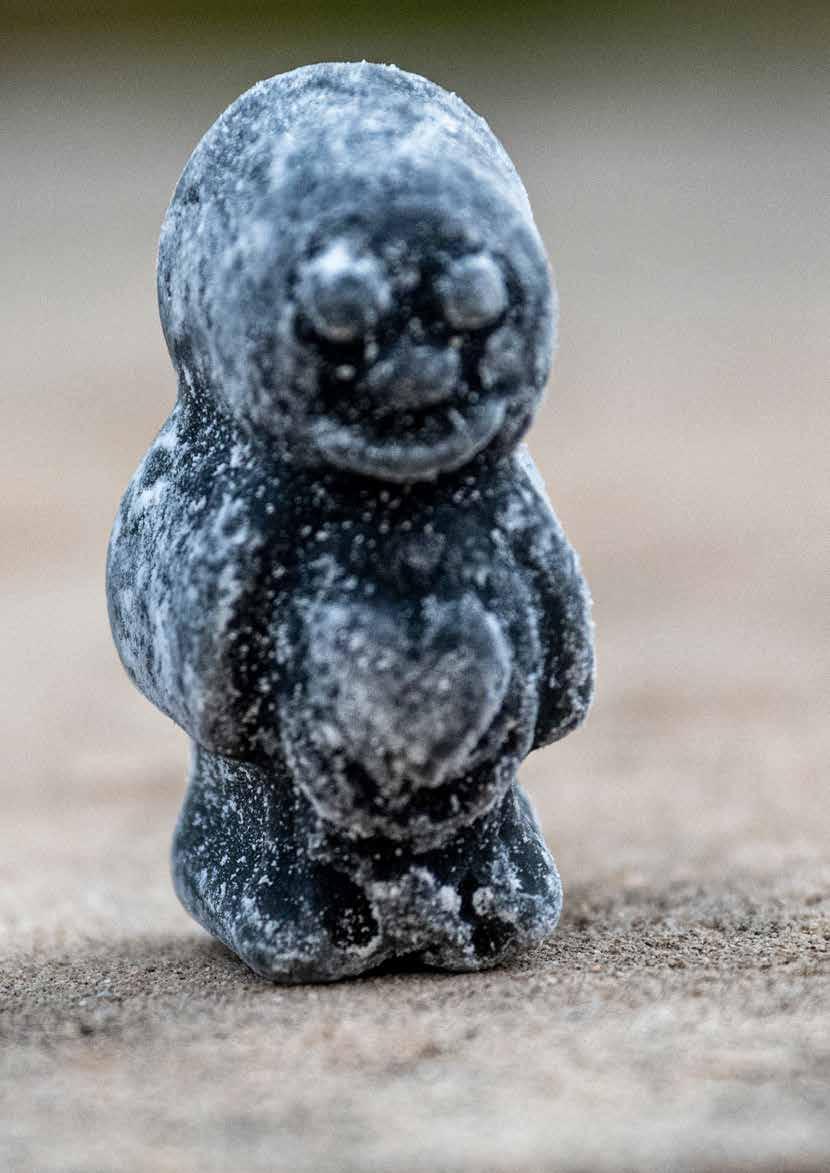




At one particular well, Tobar Naomh Aíne, I felt completely overwhelmed by the amount of votives. I was surrounded by, what seemed like, hundreds of Marys and Jesuses. There were saints and a very large frog wearing goggles, headless statues with rosary beads wound around them, a crucified Jesus handing by one arm. As an athiest, who was brought up without any religion, finding myself surrounded by such a tremendously deep faith was a disconcerting and uncomfortable feeling. The votives were such a contrast to the surrounding remote beauty of south Connemara, the water lapping beside the well and the twelve Bens standing tall in the distance. The wind howled in a way that the wind only blows in the west coming in from far out in the Atlantic. If votives give you a direct line to the supernatural forces, these people had a direct line. I had to remember I was there for the water not the religion.


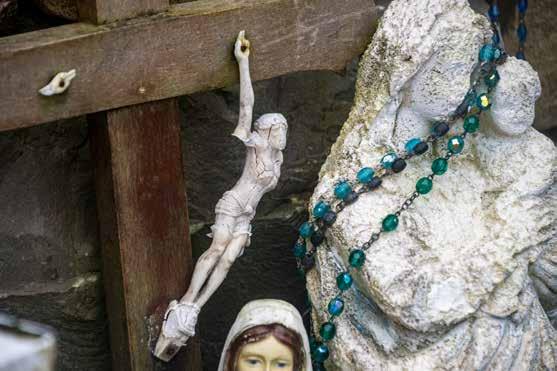

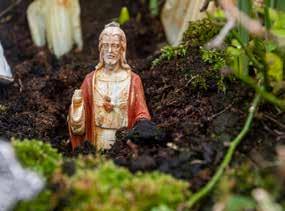
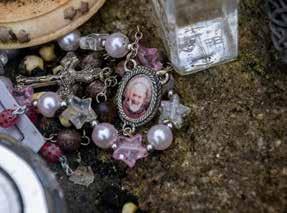






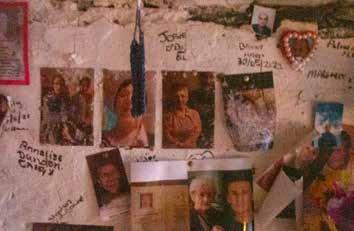
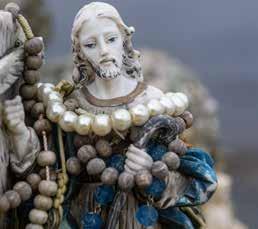






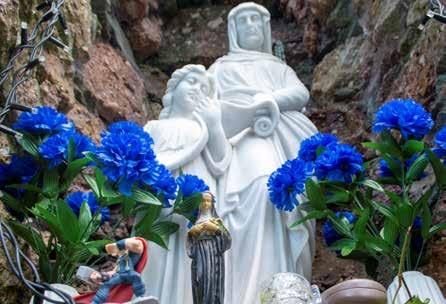
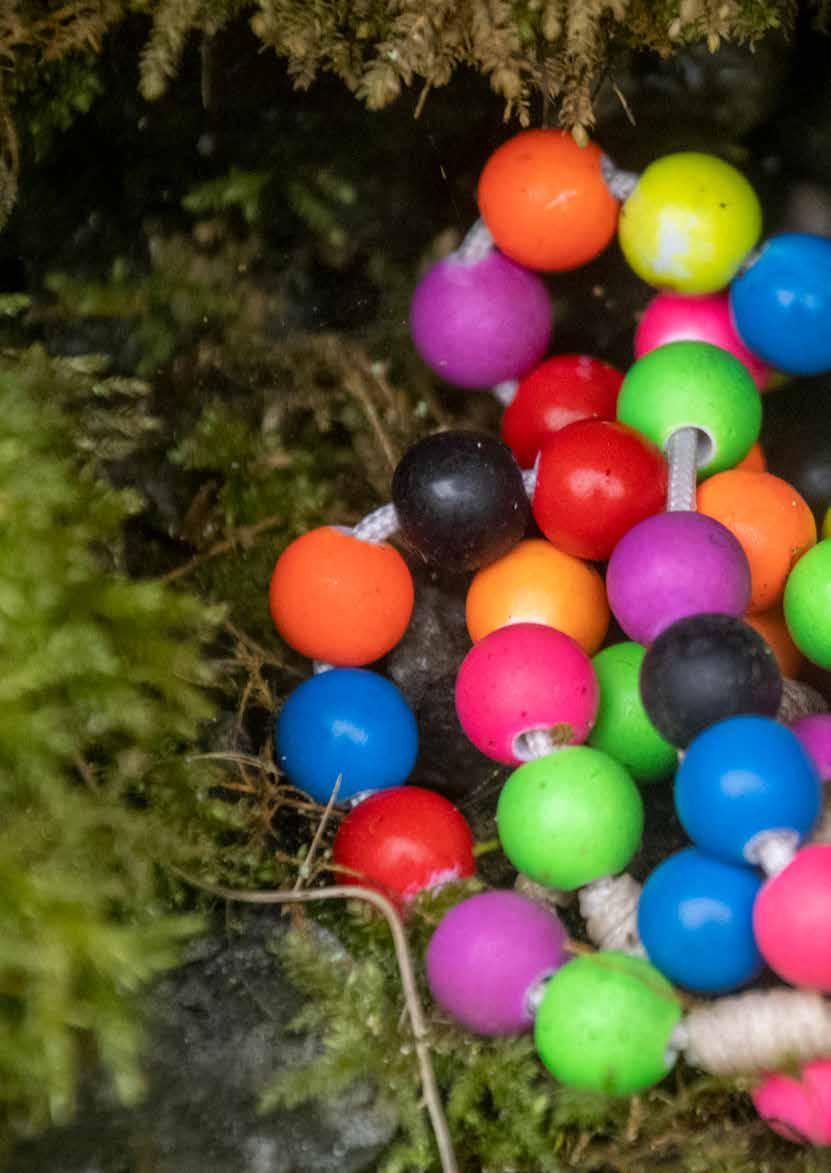
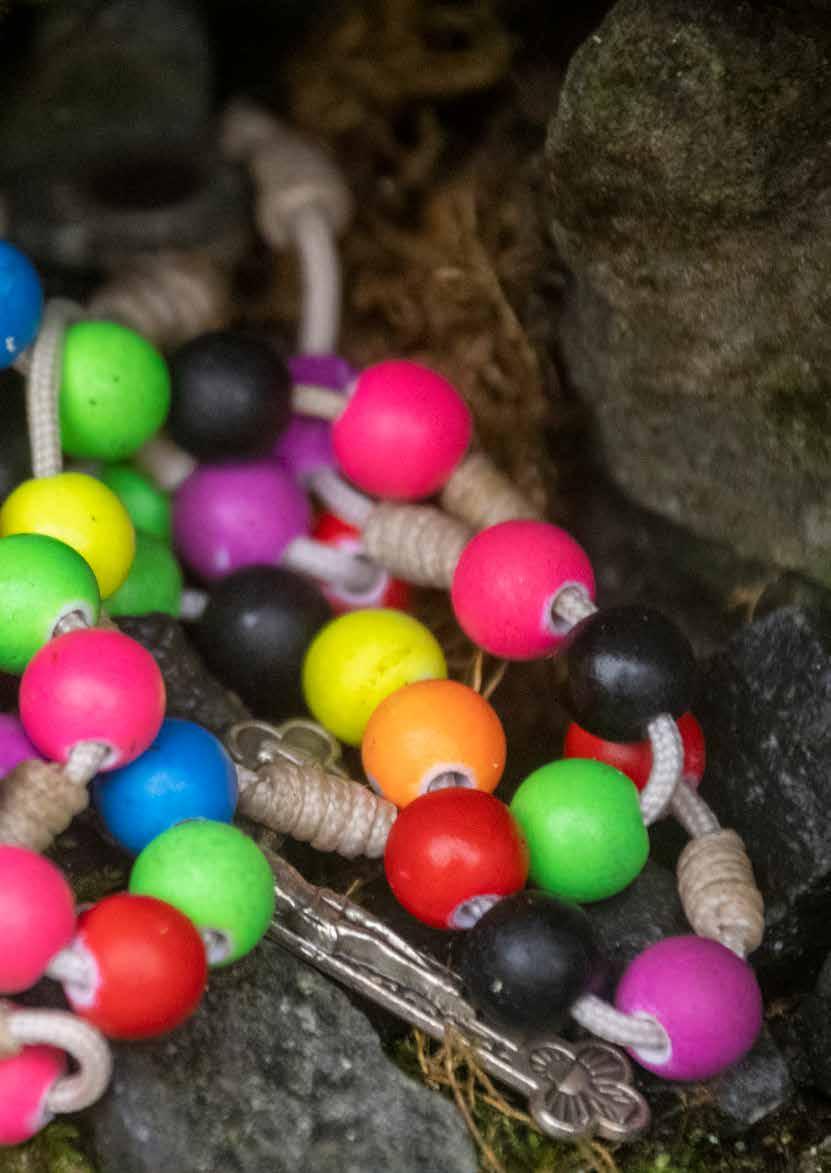
Rag Trees
Rag trees are often beside a holy well and are another way of offering votives and praying. More often than not they are hawthorn trees but not always. Traditionally a piece of cloth, clothing or a rag from someone who was sick was tied to the tree and prayers said. As the rag rotted away so the sickness was said to disappear. A visual representation of the illness losing power and strength and eventually disintegrating. The rag could also embody a particular aspiration or wish which would transpire once the rag fell apart. Even though what’s is left is meant to be able to disintegrate and return to the earth, nowadays, all sorts of things are left that will not degrade for a very long time - if ever. This custom is not unique to Ireland. For example Amots Dafni notes that a Middle Easter Muslim practice “Clothes that are left on sacred trees are not gifts, but rather chan-
nels connecting the worshiper to the deity” (Dafni. 2002. p316).
One of my interviewees found that by leaving rags on various rag trees helped her recover from a bereavement.
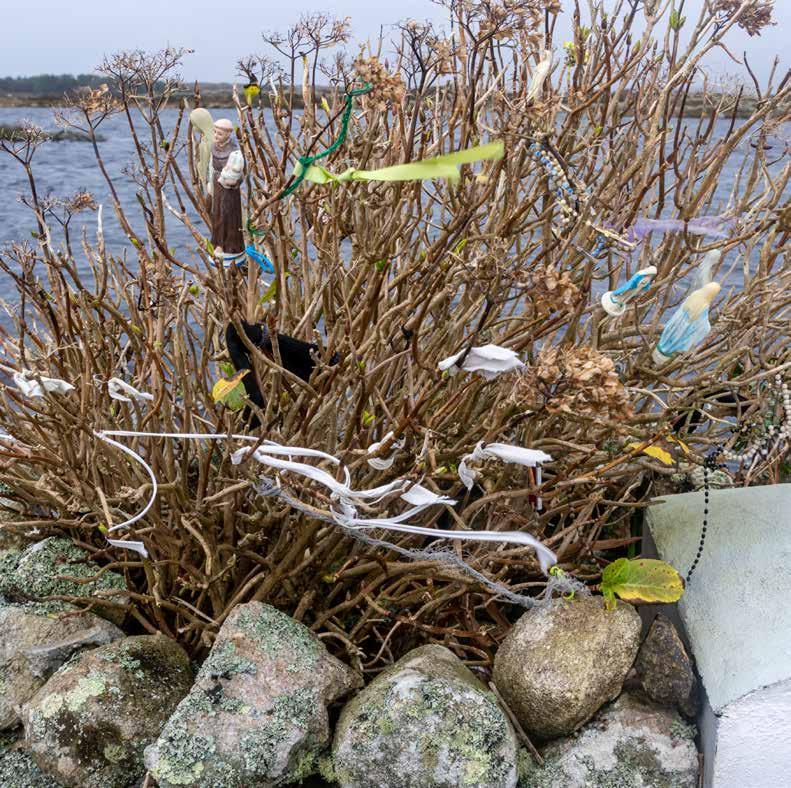
“I shredded this beautiful green silk shirt that a great friend of mine had given just before she died. She was absolutely furious she was dying, and she was only 54.
After she died, I was devastated by her death I felt as if a whole part of me, a whole shared history was gone. I went to five different holy wells over a couple of weeks and tied a piece of this green silk shirt onto the trees and left them there.
She was so angry just before she died so furious, I really wanted this to calm her the way water does. I hope it worked it soothed me anyway.” - Bridget.

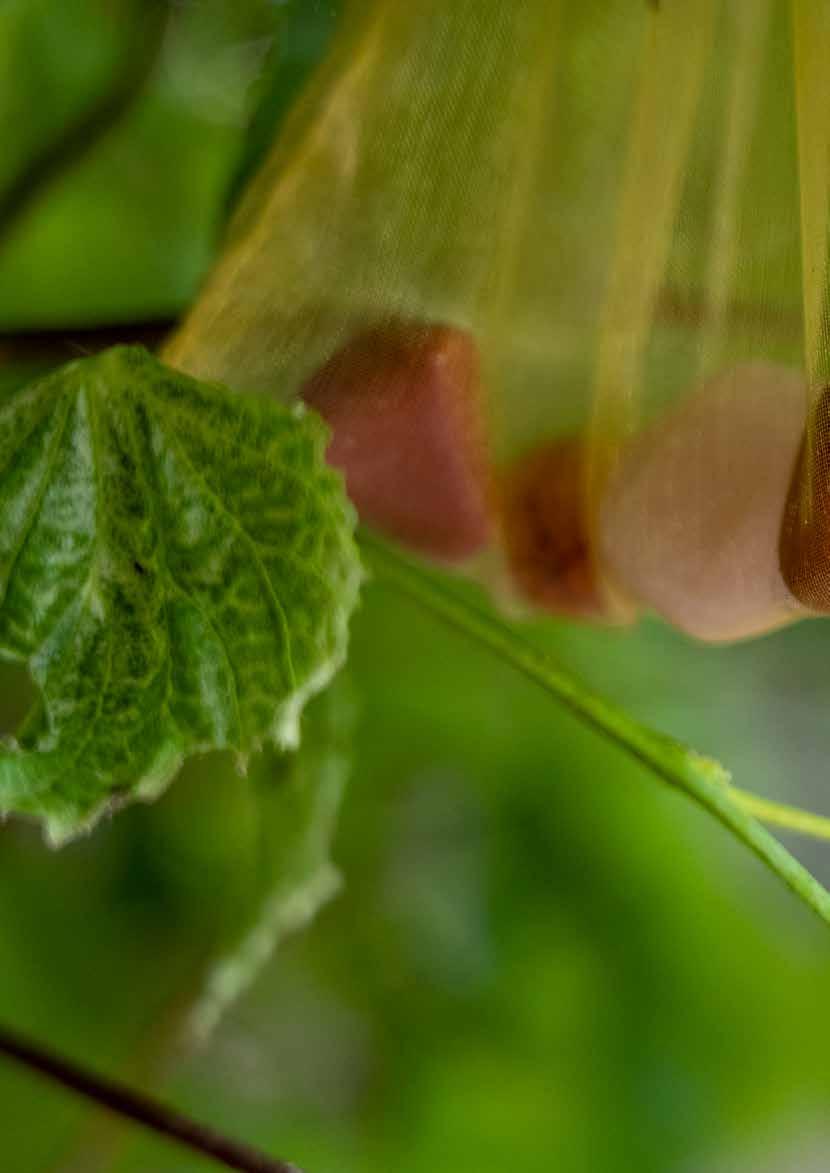
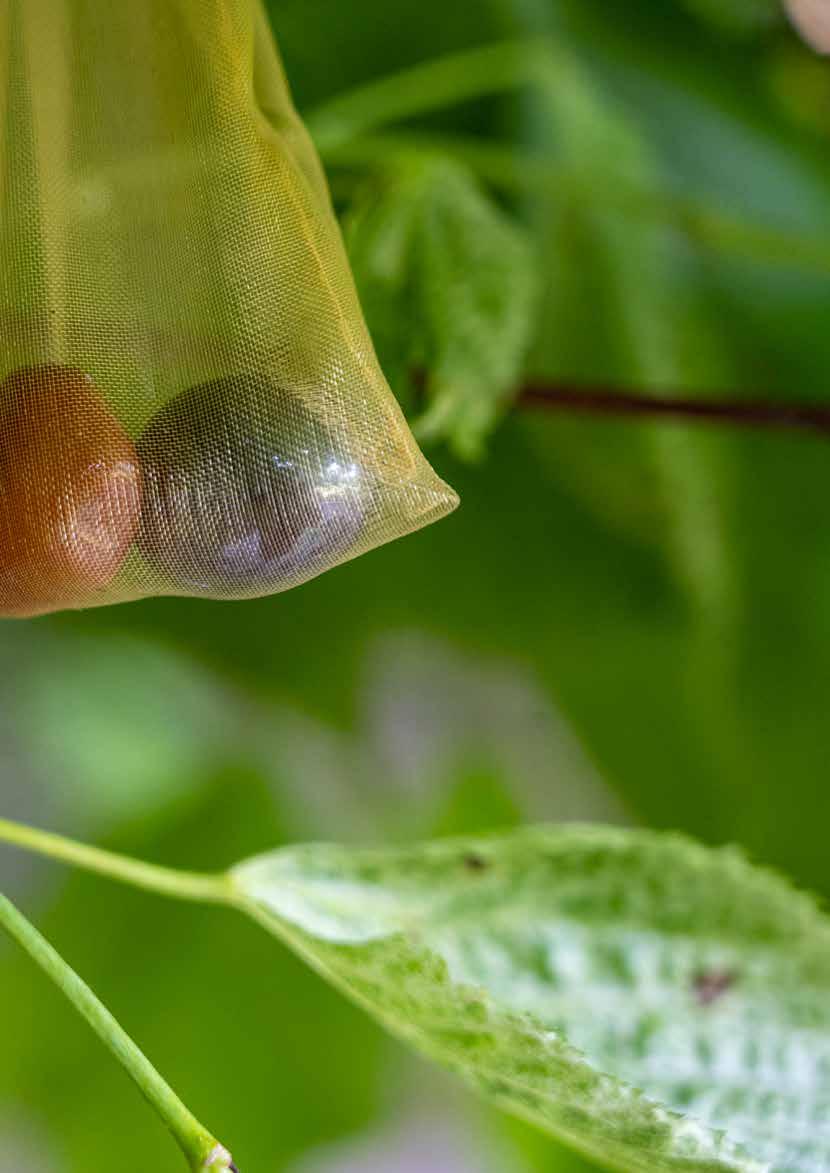
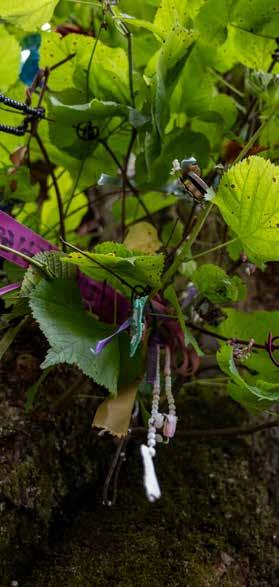
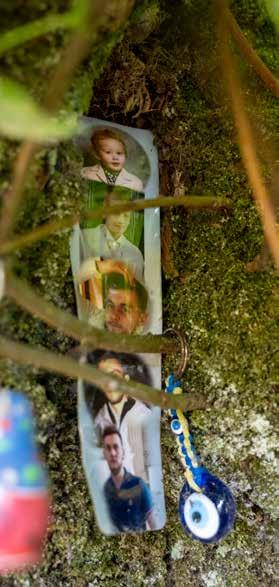



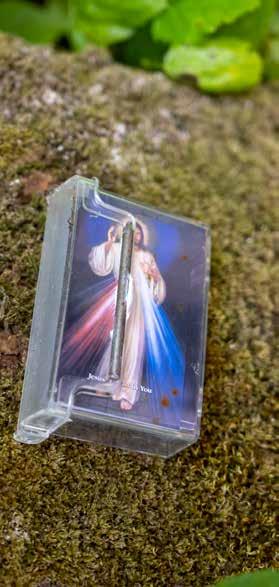


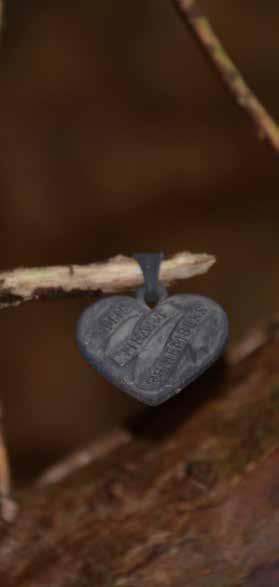



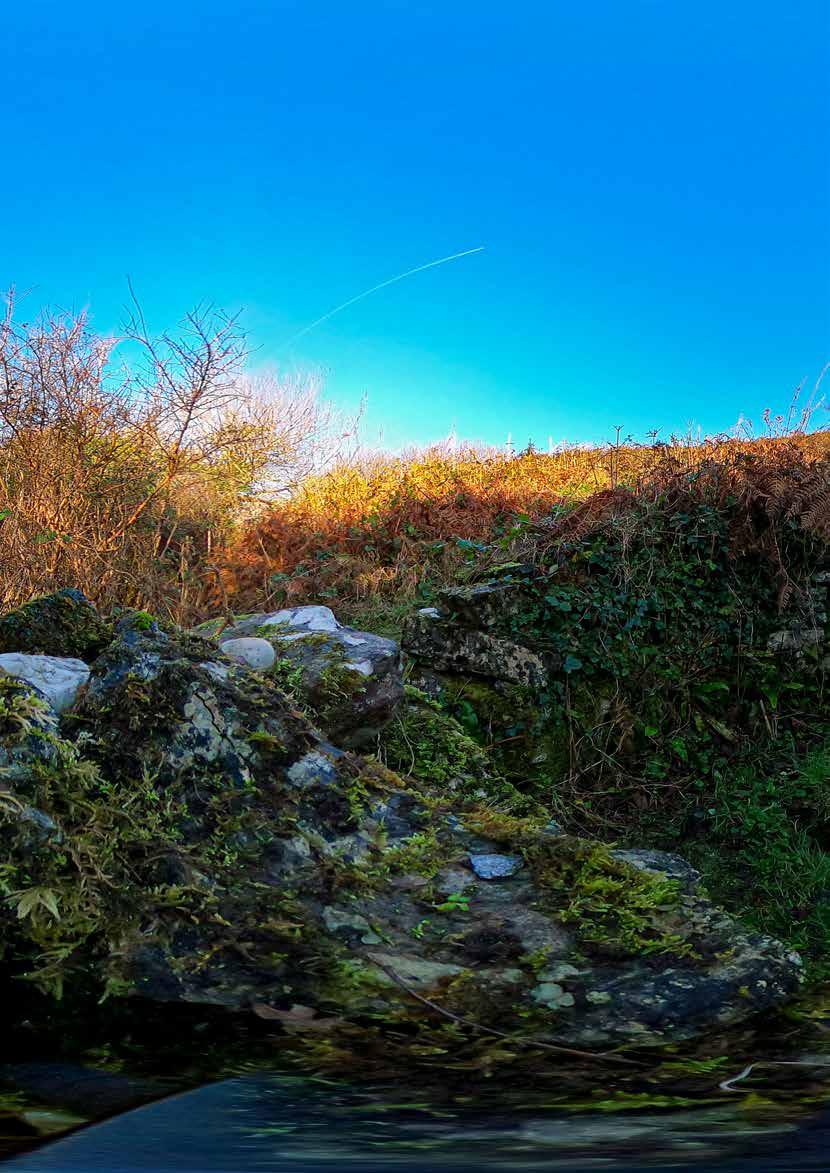

The Otherworld
In Irish Mythology the gateway to the supernatural realm or otherworld was where the land met the water. Places of doing and undoing where water surrenders to the land and land to water. In Irish it was called Tír fo Thuinn (land under the wave). Irish myths and legends are full of tales of people visiting the Otherworld where they might be granted a particular skill or talent by the supernatural beings living there (Evans, 2021). The Otherworld is often described as being imperceptible to the average person even though it surrounds us at all times. A transformative space between different points in time (ibid). This belief in water sources being a gateway to the otherworld is possibly one of the reasons why natural springs became places of worship.
My otherworld is the experience of being immersed in and under the water. Here everything looks and feels different from the land. Sometimes it can elicit feelings of elation and at other times sensations of being overwhelmed and anxious, what Gaston Bachelard describes as the feeling of ‘immensity within ourselves’ (Bachelard, 1958, p. 184). In order to try and capture those feelings, at each well, I experiment above and below the water, as I border the supernatural underwater world. Alongside the physical actuality of light, water, reflections, refraction there is also the metaphysical that occasionally reveals itself. In the darkest murkiest water light and colour emerge where it should just be shadowy gloom. Strange photographic encounters that help me as I seek to discover waters ineffable qualities and a new way of looking at and experiencing water. My water explorations have come at a cost as I have experienced losing and getting lost in the water. Water can be a blissful giver of life or a violent killer and sometimes our
art can take us to the edge. For example, the contemporary artist Bas Jan Ader was making a trilogy called ‘In Search of the Miraculous’. It was to be a three-part journey of one night in Los Angeles, approximately sixty days crossing the Atlantic from Cape Cod to Amsterdam and one night in Amsterdam. He completed the first part, a night in Los Angeles and on July 9th, 1975, he set sail, solo, from Cape Cod. After three weeks he lost radio contact. His boat was not found until one year later. An artist and adventurer who battled the might of the sea for his art and lost. To a lesser extent, the might of the sea became apparent to me one day when I was experimenting with my underwater camera in the sea. I was concentrating on the light and shadows in the water when I suddenly realised, I had got caught in, what I assume, was a rip tide. I was being dragged along and I decided it was time to get out or at least reach where I could stand. I started to swim as hard as I could but wasn’t really getting very far when I realised my camera was no longer on my wrist. The strap had broken or come undone. The camera was bright red and I saw a flash of red below. I could see it on the seabed moving with the tide. I dived down but couldn’t reach it. I dived again but it was too far and was moving quickly away from me. And then it was gone. I knew it was time to get out and managed to swim to the shore. For weeks I searched daily for my camera at low tide hoping to spot its red body on the shore to no avail. It is probably now buried in a sand bank for archaeologists to find in the future.
I have also managed to lose two mobile phones to the water of the wells. The first while searching for Colmcille Well with Michael Gibbons and the second at St Patrick’s Well in Waterford. Both times they fell out of my pocket and into the water where they vanished into the otherworld.

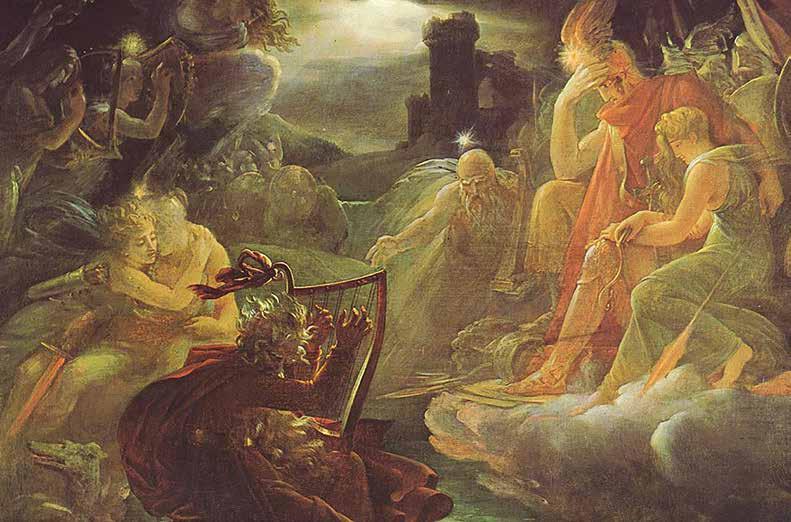
 Ossian on the Bank of the Lora, Invoking the Gods to the Strains of a Harp. De François Gérard. 1801 The Yorck Project (2002)
Ossian on the Bank of the Lora, Invoking the Gods to the Strains of a Harp. De François Gérard. 1801 The Yorck Project (2002)

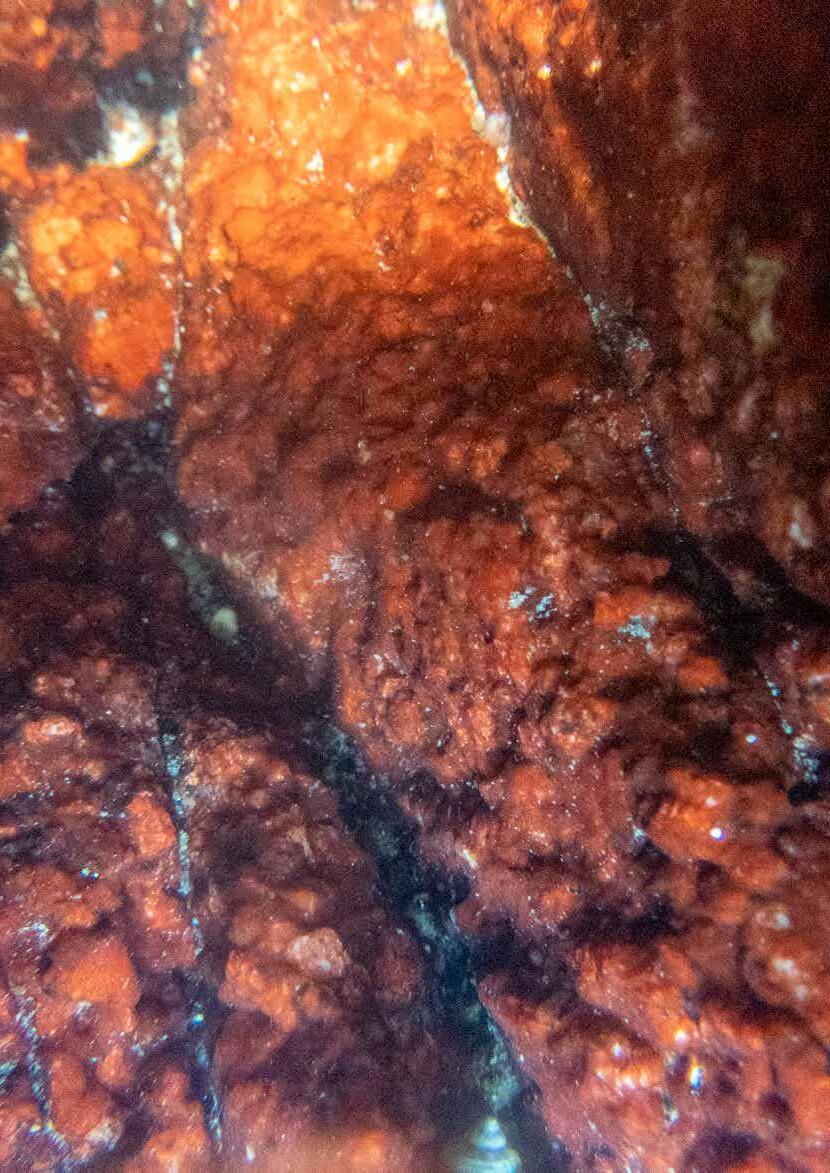


Healing at the Holy Wells
Every well has its own character, atmosphere and healing benefits attributed to its water. They are often ancient simple structures in beautiful and secluded places invoking feelings of tranquility. Some are overdressed by the catholic tradition and these tend to give less of a feeling of peace and instead a more controlled and ridgid atmosphere, similar to the disparity between golf clubs and nature reserves. The healing qualities of the wells vary from eye ailments, joint pains, headaches ,to mention a few, and people travel for miles to be healed by the waters. The Mad Well in Camp, County Kerry, is recognised as a well that heals madness. When the water was tested it was found to contain lithium, which would have appeared to help any mental issues they might have had. In the Schools’ Collection, Volume 1085, it explains how at holy wells “The people drink it and wash the affected parts with it. They also take bottles of water home with them” (duchas, circa 1930’s, pp. 126-7.) There were and still are specific pilgrim rituals at different
holy wells. A 1930’s description of a pilgrim ritual at Doon Holy Well in County Donegal was, “To make a pilgrimage correctly one has to fasting and when he comes in sight of the well their shoes must be taken off as it is believed the ground is blessed. He washes his feet in the water, which is to be got all around. Then the prayers are proceeded with Five Our Fathers, Give Hail Mary’s, and Five Glorias in honour of Father O Gallagher and Father O Friel, and the same for the person who sheltered the Holy Well. Also a creed for every bottle of Holy water lifted.” (Duchas, circa 1930’s, p. 036).
It was believed that if a pilgrim was healed at a holy well they should leave their bandages or crutches. otherwise bad luck would befall them. “A man who came down on crutches and walked away. But he was greedy and then he came back to take his crutches from the holy well. But when he had collected his crutches and tried to walk away he couldn’t!” - Suzanne
 Crutches and Bandages Left at Holy Well National Folklore collection Flickr (https://flic.kr/p/dYzjzj)
Crutches and Bandages Left at Holy Well National Folklore collection Flickr (https://flic.kr/p/dYzjzj)
This belief in the special healing qualities of the water was considered true by ninty nine percent of my interviewees. Some of them claimed to have been healed by water fromholy wells:
“I had a crash to my head a few years back and one of my eyes was closed. A few days or so later I got an x-ray, on the way back from the hospital (I could not drive) I stopped at Saint Augustine’s holy well Lough Atalia Rd., Galway. This well has a long history of documented healing. After a while at the well I rubbed some well water onto my closed eye, put on sunglasses and headed off. After about 20 metres away from the well I notice something odd about the light around me. I took off the sunglasses and noticed my injured eye had opened fully, the swelling seemed to have gone way down and I could see through the eye.” - Noel Healing eye ailments is one of the most common cures to

be attributed to holy wells.
“Well, I did have a stye in my eye when I was young a very bad stye it was spreading. It was a huge stye. I couldn’t see out of it, it was all closed up. St Declan’s well water in Ardmore is supposed to cure eye ailments, so my mother had a serious session of sticking my eyes in the water from Saint Declan’s well, ablutions three times a day, every day and after four days it was gone and there was no scar or anything. And I have never had one since.” - Brdgit In the words of Alec Bartholomew “Our forebearers regarded water as sacred. Was this just superstition, or did they know something we don’t?” (Bartholomew, p. 21). During my research I have found that water is more than just a simple element pouring from the tap. Holy wells have held man’s imagination for centuries and even today it would appear to contain, not only healing qualities ,but also feelings of peace for their visitors.


Straddling the Well

Everybody has their own personal way of interacting at the holy wells. Whether it is praying, meditating, or just enjoying the surroundings. One lady had her own particular way of interacting with the well which was to straddle the flowing water.
“The idea of a ladies well just sounds lovely. So it’s quite lovely to straddle that well and see the water flowing almost as if it’s out of you. I just love straddling ladies well. And just seeing that water just flowing off and just wondering where is it going? What is it doing? Will it flood? and will it spread out really thin? And when it retreats what sort of silt will be left? And what will grow in it?” - Bridgit
While this may seem unusual, it would appear that Bridgit has a deep connection to not only the water but perhaps the historical site itself. “...the well sources themselves were regarded as entrances to the mysterious female realm of life creation and nourishment. It is not farfetched to imagine them as representative of vaginal portals into the womb of the Mother Goddess” (Magan, 2022. p.231). Through my research It would also appear to be, that more women than men are attracted to the holy wells. The majority of people I met at the wells were women and, through photographic historical research, I have discovered that, more women than men have always attended the holy wells. In which case it would appear that Bridgit is connecting to a much older, and deeper link to the past. It could be described as a sublime transcendental experience with nature and our collective past.
‘Three women at St. Declan’s Well’ 1910. Waterford Museum Photographic Archive


Dark Field Microscopy
The Teagasc Research Centre at Johnstown Castle, Wexford afforded me access to a dark field microscope without which I could never have researched into the microscopic world of water. Under the tutelage of Dr Israel Ikoyi, I learnt how to use the darkfield microscope.

I have researched the works and experiments of Professor Kroplin and Masuru Emoto. Both scientists observed how water from different sources created a unique image or ‘face’. Therefore, at each well site I carefully collected water samples. Then I used Professor Kroplin’s method of photographing water drops, the Droplet Evaporation Method (DEM). This method involves the monitoring of dried water drops using dark field microscopy. Using a disposable syringe, for each sample, water drops are placed onto a glass specimen slide and allowed to dry. Once dried it is observed under a dark field microscope and photographed.
This method enabled me to extend my individual visual perspective and discover significant revelations revealed within each of the water samples. I ascertained that each drop of water, from each individual source, indeed had its own ‘face’, or individual characteristics. For example, one ‘face’ might appear to be a delicate drawing and another an image from out of space. Looking at these extraordinary images of water made me feel as if water is desperately trying to communicate with us, by using strange forms and shapes. As if there is ‘in the object the presence of something that transcends the object (Lyotard, 2006). A metaphysical universe embodying the unthinkable.
A selection of these images are presented in the accompanying catalogue ‘Water and the Sublime’ where I have tried to embody this feeling of the sublime as the viewer’s imagination is engaged with wonder at this new way of seeing water.




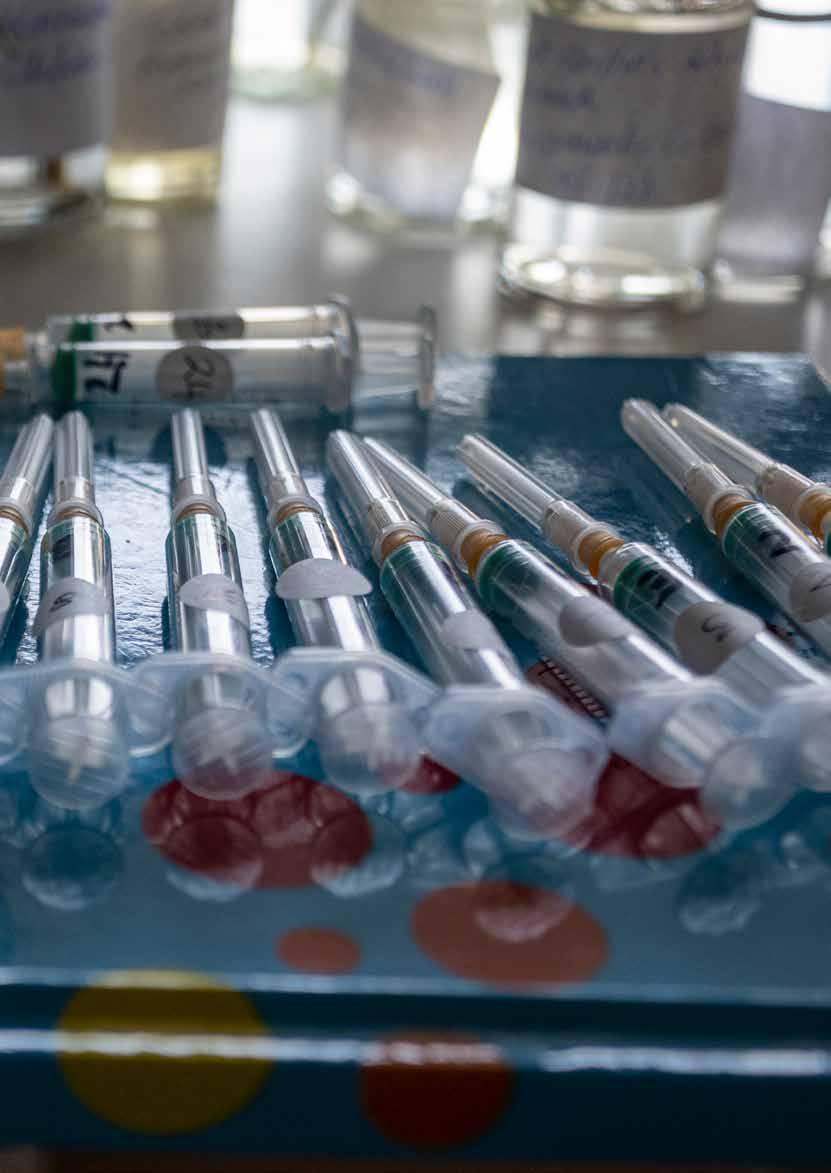
Professor Kroplin and Masaru Emoto have provided evidence in their respective books, The World in a Drop and The Hidden Messages in Water, that water reacts to human emotions. Therefore, I expanded my experiments in order to find out if this is so. I put two different samples into two different syringes. I placed drops from both syringes onto different glass slides. Subsequently I asked my partner, Paddy, to meditate, just think silently about the water, for five minutes with two different water sources at two different times. Once he had meditated with the samples I put drops onto new slides ready for the microscope.
If ‘with the sublime we have a feeling of being overwhelmed in the face of something much greater than the subject’ (Brady, 2013) that was how I felt looking at the results under the microscope. The patterns within the water had changed completely and can be seen in the accompanying catalogue, ‘Water and the Sublime’. Pages 72-73 is the ‘face’ of St Augustine’s well pages 74-75 is the ‘face’ of St Augustine’s post Paddy. Pages 76-77 is the ‘face’ of St Gubnait’s while 78-79 is the ‘face’ of St Gubnait’s post Paddy. These images create a visual interconnectedness with nature eliciting emotions of reverence and wonder of the unknown in nature.
Inspired by the results I conducted a final experiment whereby I had three syringes of water from the same source and wanted to photograph one as was, one with love emotions and one with hate emotions directed at the water sample. The drops from the love and hate syringes were put onto slides and again all three created completely different images. The images of love can be seen on pages 66-67 and the image of hate on pages 68-69 of the catalogue ‘Water and the Sublime’. In an attempt to understand these changes within the water I am left lost for words to articulate the phenomenon. It exceeds my comprehension but if ‘beauty was never identified with reason’ (Gilber-Rolfe, 1999, p.13) then I have to accept the ability of water to respond to human emotions.

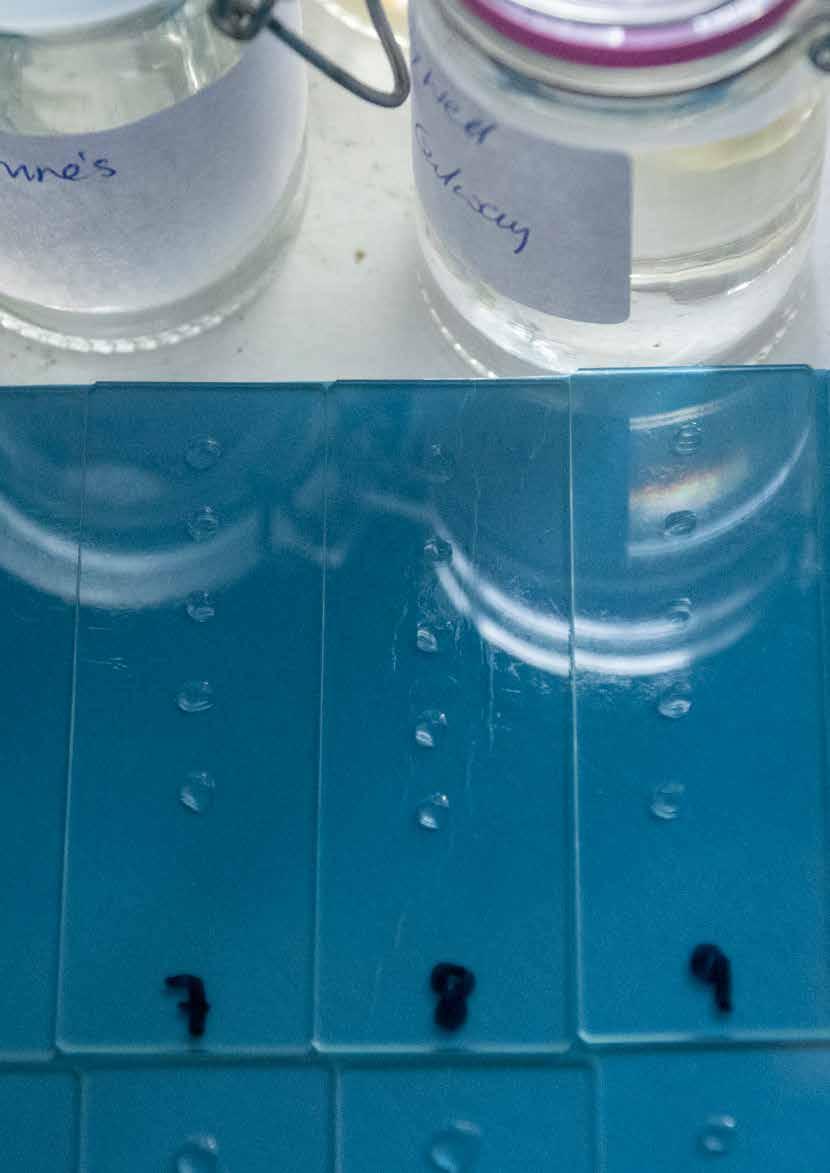
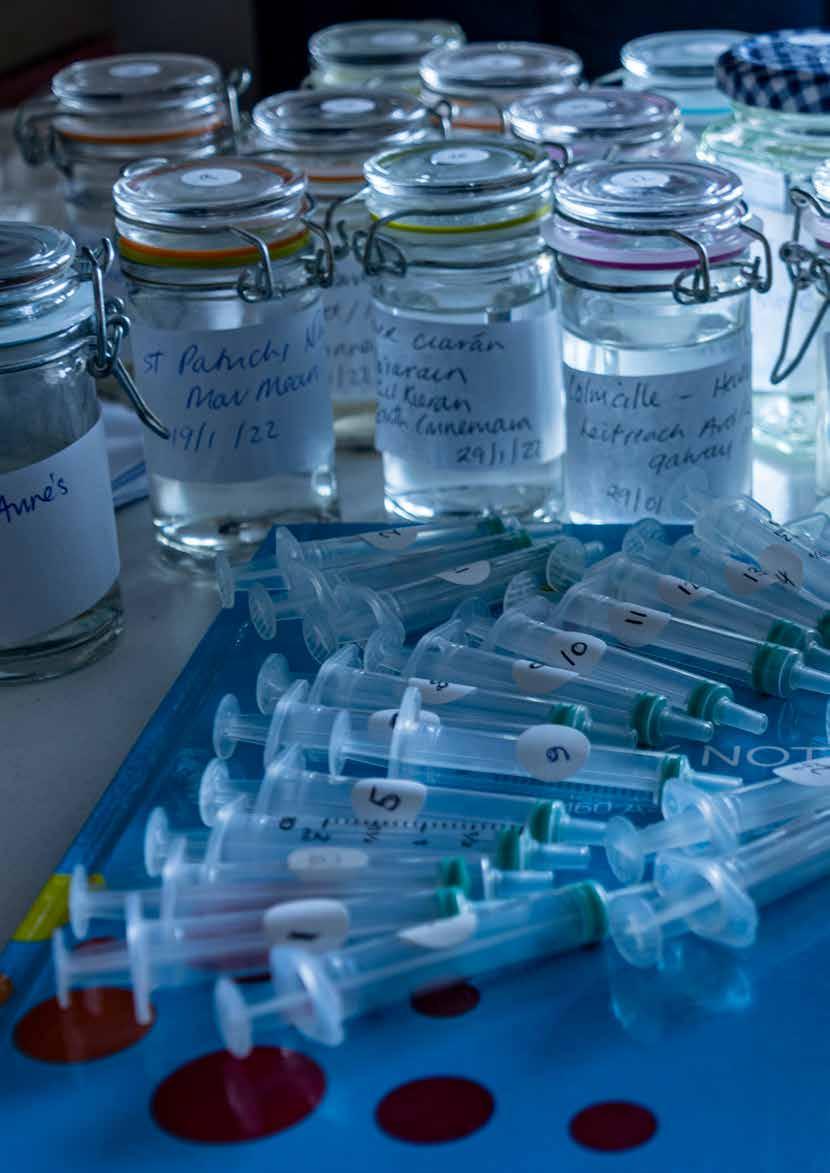
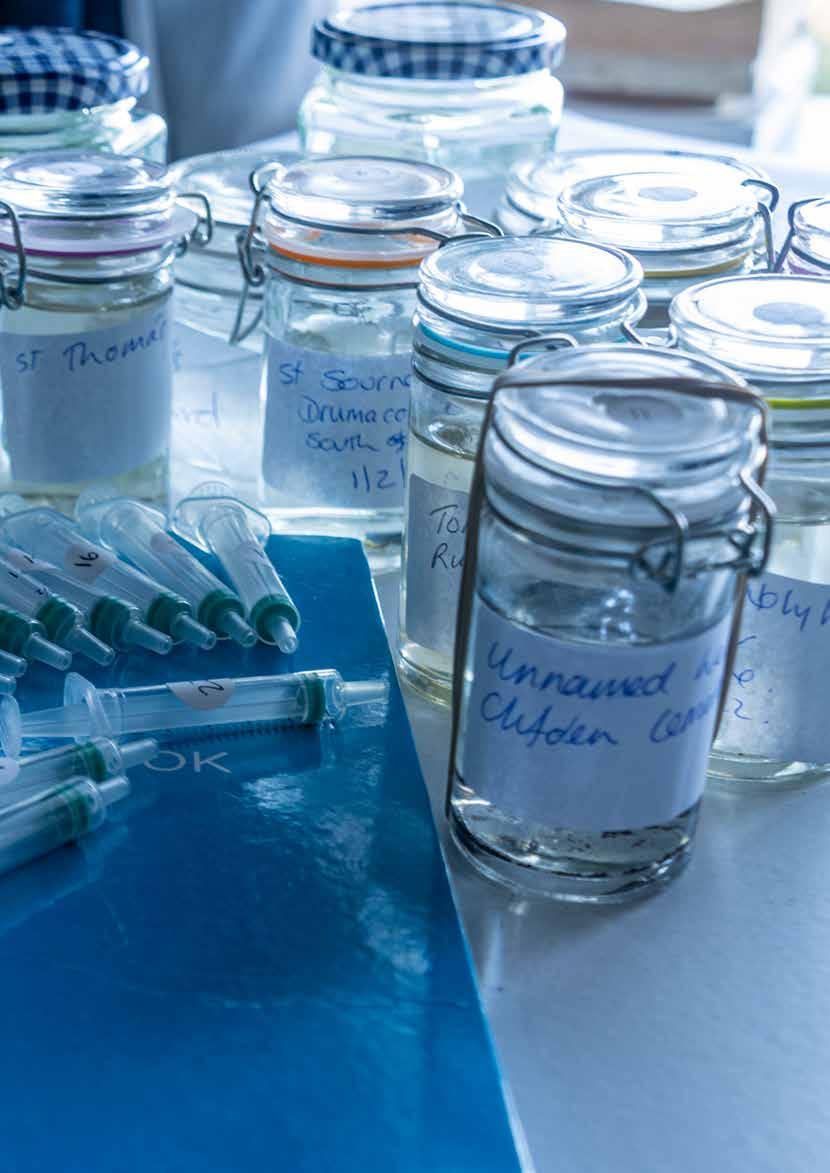
Multi-Media Experiments



My art practice is constantly evolving. Part of this evolution is learning and experimenting with new techniques and media. Eventually I want to bring my artwork away from two-dimensional image and towards a more contemporary world of installation. Consequently, over the past two years I have completed two online courses with Goldsmith University in recording and editing soundscapes, I have also started experimenting with 360 degree photography and video. As a way of delving deeper into the sublime, sound helps to generate a feeling of total immersion. Listening enables us to extrapolate from content towards meaning and orient ourselves in relation to both place and space. Sound is a phenomenon that affects our experience in everyday life. It helps us to define our location and direction. It links with the quality of life within a space.
My first experiment was a multimedia piece of 360 degreemoving photographs accompanied by infra sounds from holy wells. I wanted to recreate the real world only in an atmosphere and feeling as it appears in dreams. As if one is experiencing another world or planet. The strange moving image gives one time to reflect on the strange sounds
from within the water of these dreamlike places. The second multimedia piece was more complicated. I wanted to create a water installation that included photographs and water from the holy wells, accompanied by extracts from the ethnographic interviews. Creating an atmosphere of reflection and the contemporary relationships between humans and these ancient sites of hydrolatry and devotion. I found a milking jar that was a suitable size and construction. A local glass artist, Fred Curtis, helped me remove the measuring engraving across the glass jar. I installed a water pump and bubble machine and sealed the lower opening. I filled the jar with water from a local holy well, St James’ of Tomhaggard, printed and glued photographs from my research at all the holy wells. When assembled the photographs floated around the jar in a haphazard but hypnotic motion. This was accompanied by a selective recording of ethnographic interviews. Together it created a meditative experience similar to that found at some of the holy wells where the visual aspect of the images in the flowing water with the bubbles allowed the viewer to reflect upon the sounds.
The Milking Jar Fred Curtis clears the jar of measurements The final water instalation
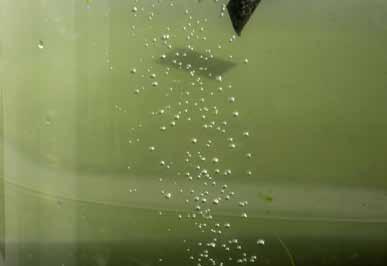






References
Bradley R. 1990. The Passage of Arms. Cambridge. Cambridge University Press.
Bartholomew A. 2010, The Story of Water: Source of Life, Edinburgh, Floris Books.
Bartholomew A. 2003, Hidden Nature: The Startling Insights of Viktor Schauberger. Edinburgh, Floris Books.
Dafni A. 2002. Why are Rags Tied to the Sacred Trees of the Holy Land?” Economic Botany 56 (4): 315-327
Emoto M. 2001. The Hidden Messages in Water. New York. Atria Books
Evans Z. 2021. Exploring the Otherworld of the Celts. Available at: www.folklorethursday.com/2021/03 accessed: 3/7/22
Gilbert-Rolfe J. 1999. Beauty and the Contemporary Sublime. Allworth. New York
Kroplin B. 2016. The World in a Drop: Memory & Forms of Thought in Water. Prof. Kroplin B. ed. Barcelona. CIMNE International Center of Numerical Methods in Engineering.
Magan M. 2022. Listen to the Land Speak. Gill Books Dublin Ireland. p231
O’Sullivan A. 2007. ‘Exploring past people’s interactions with wetland environments in Ireland.’ Proceedings of the Royal Irish Academy 107 C:147-203
Shauberger V. 2002. Living Water. 2nd Edition.
The Schools’ Collection, c. 1930’s Volume 1085, Page 126-7 Informant: Gráinne Bean Uí Dhomhnaill https://www.duchas.ie/en/cbes/4428355/4398870
The Schools’ Collection, c. 1930’s Volume 1083, Page 036 Collector: Frances Harkin https://www.duchas.ie/en/cbes/4480654/4408296
Hancock G. 2001 Netflix Series Ancient Apocalypse 2001, Produced by Bruce Kennedy (Documentary Series) United Kingdom. ITN Productions
Lyotard J.F. 2006. ‘The Communication of Sublime Feeling’ in Lyotard Reader
